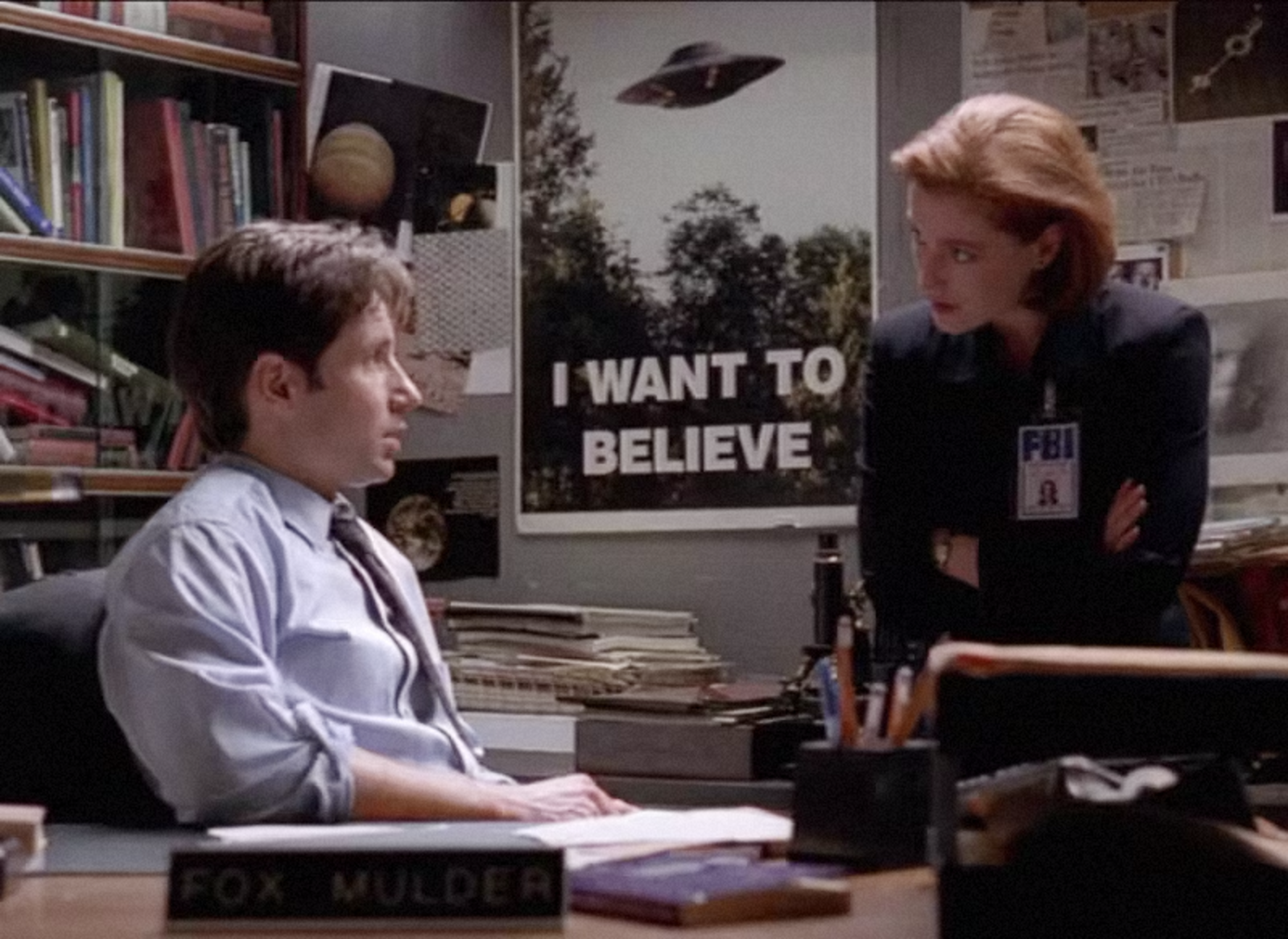
In 1960 Dutch mathematician and astronomer Hans Freudenthal published LINCOS: Design of a Language for Cosmic Intercourse. The title “LINCOS” derives from “Lingua Cosmica,” Latin for “Cosmic Language,” reflecting his aspiration for a language transcending terrestrial boundaries.
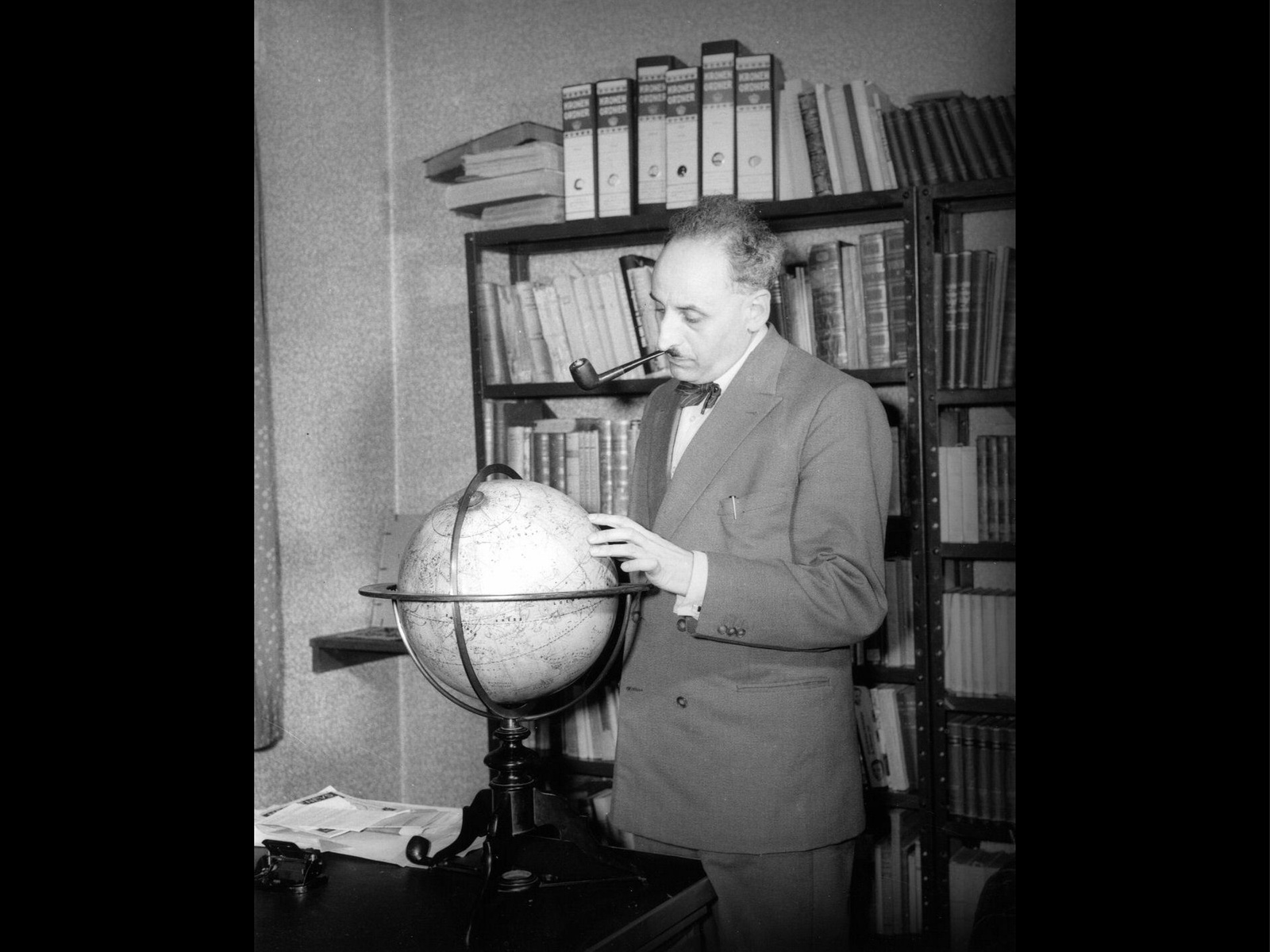
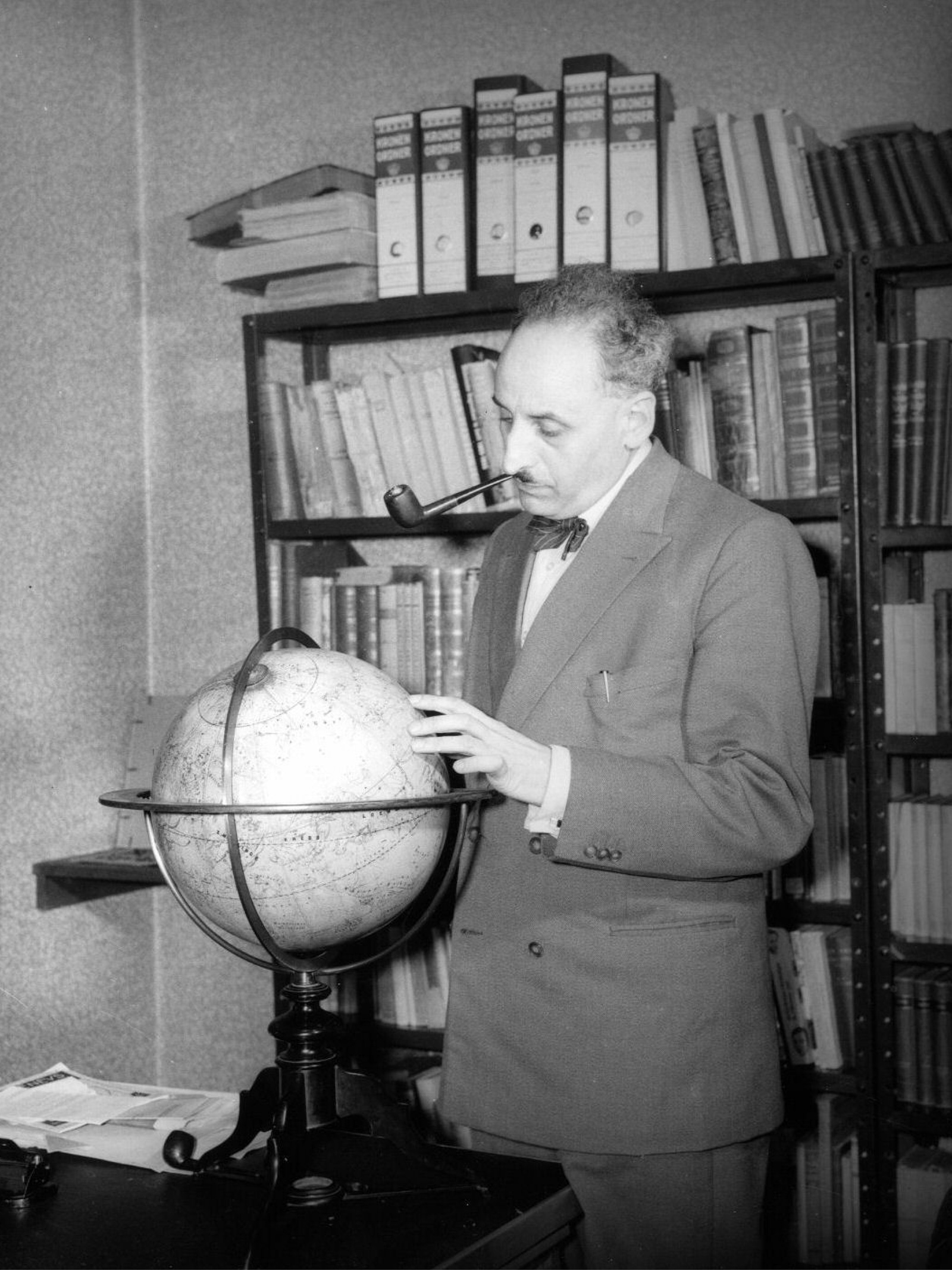
In this work, Freudenthal proposed the development of a universal language for communication with extraterrestrial civilizations.
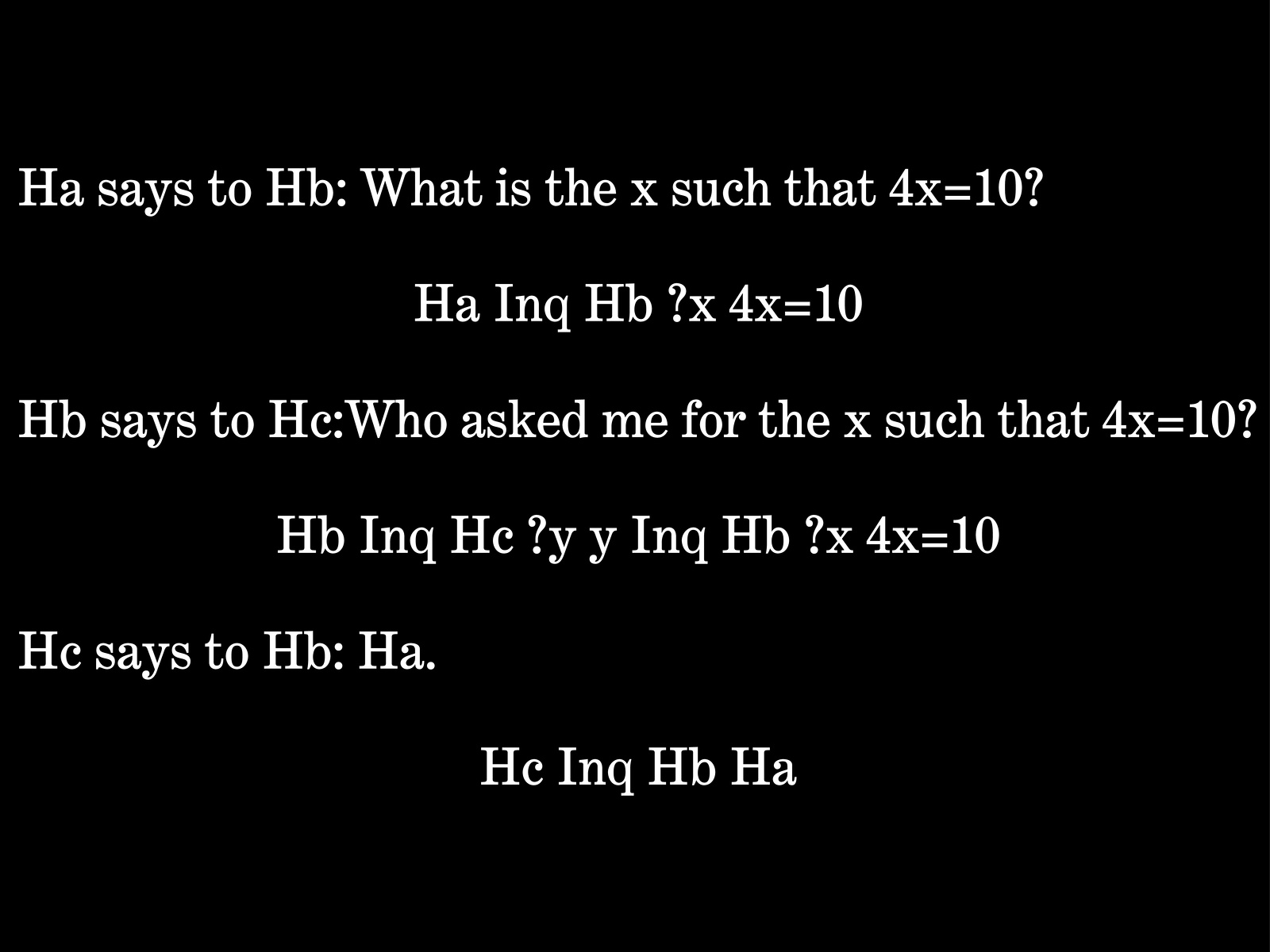
In designing the language, Freudenthal crafted a structured system of symbols, grammar rules, and mathematical encoding. This study served as both theoretical exploration and practical guide to cosmic communication.
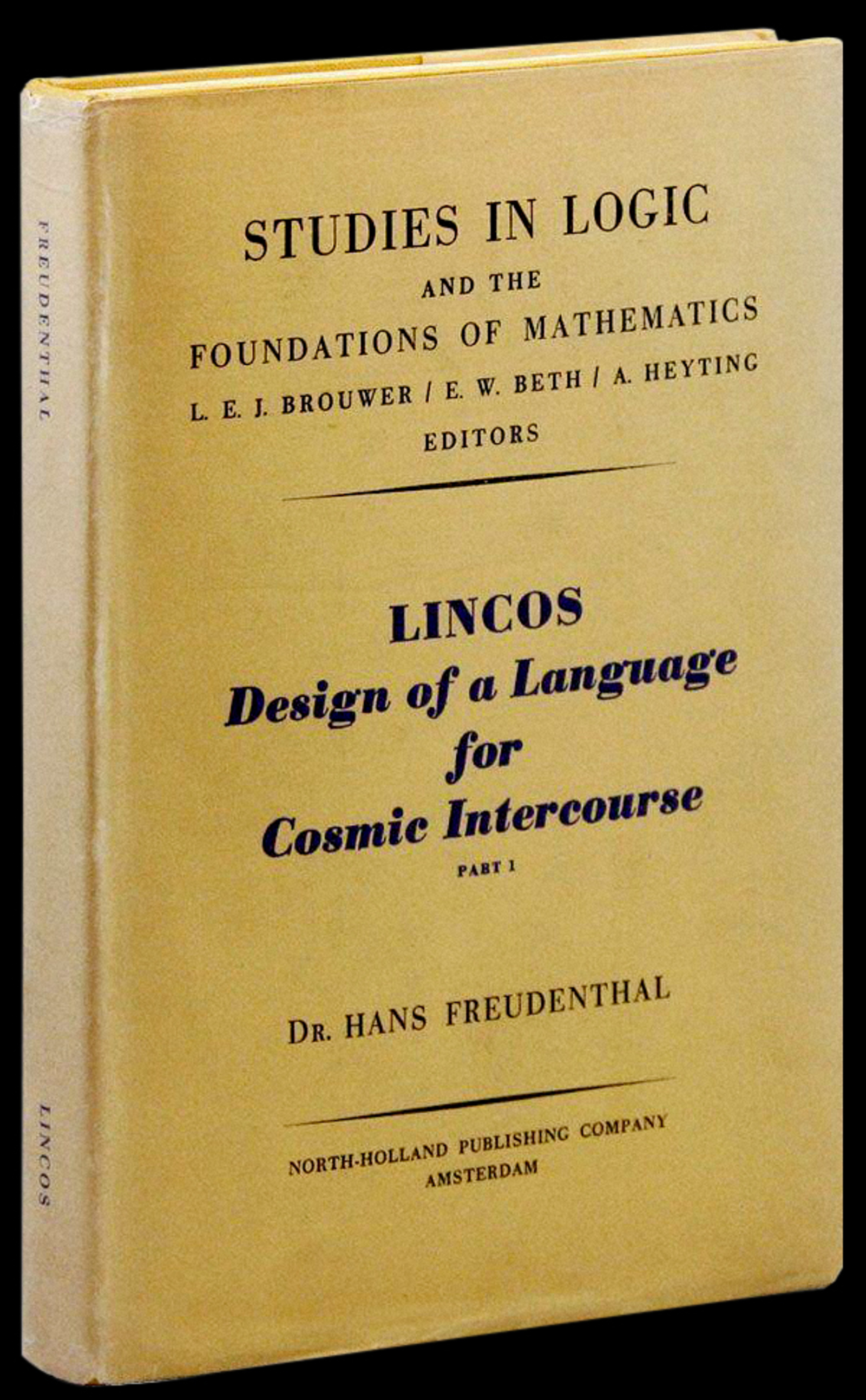
Following the publication of LINCOS, humanity witnessed significant progress in scientific discovery.
In November 1962, Ukraine’s Evpatoria Planetary Radar (EPR) complex transmitted the first radio broadcast intended for extraterrestrials, with the aim of reaching Venus.
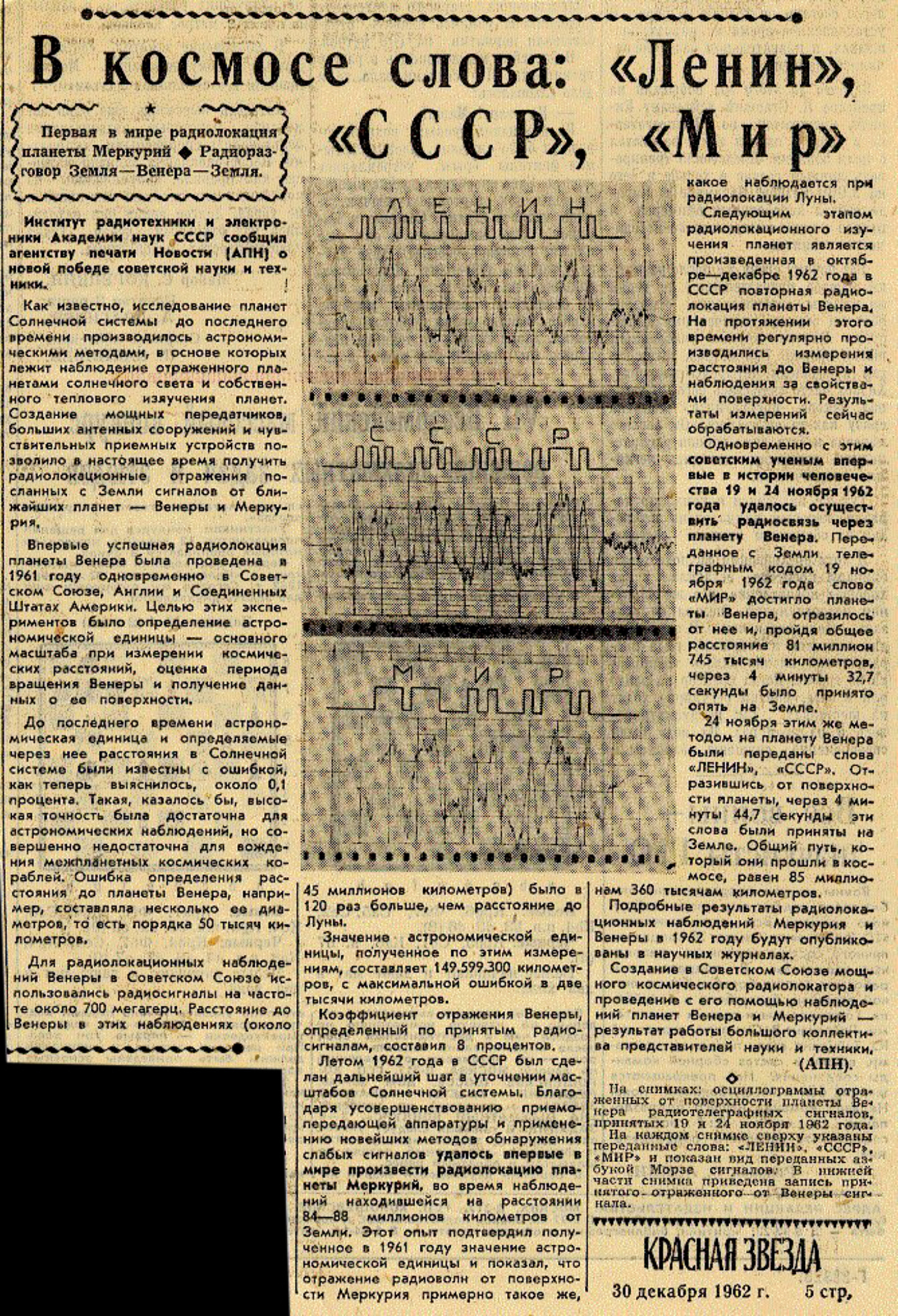
Known as “The Morse Message,” the missive contained the words “MIR” (meaning “peace” in Russian), “LENIN,” and “USSR” in Morse code. This historical event aimed to showcase human achievement and ideals.

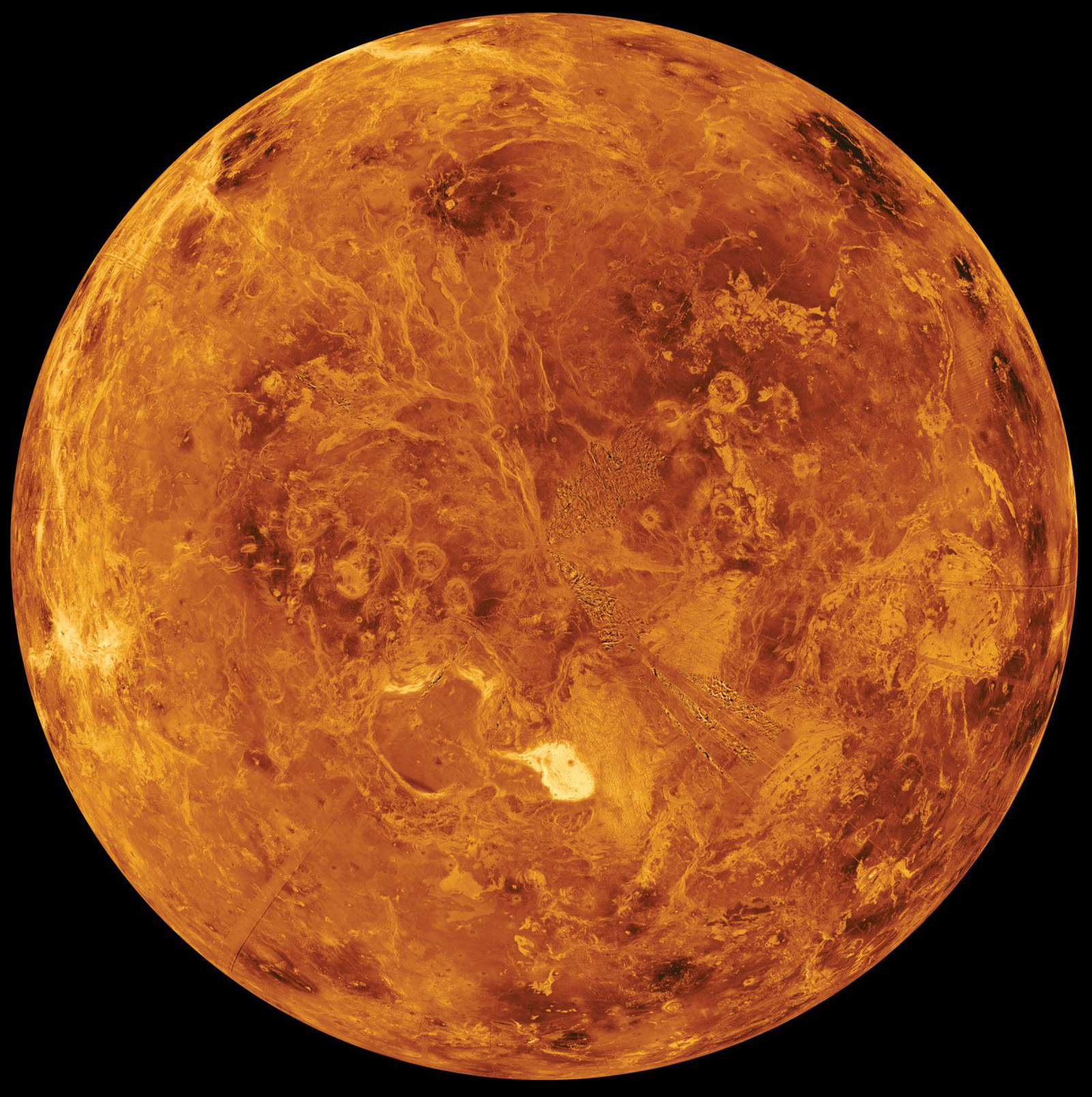
The possibility of life on Venus was thought provoking, due to its proximity and similarities to Earth, yet no definitive evidence has been found to date.
Ten years later, in 1972, Frank Drake and Carl Sagan, along with Sagan’s wife Linda Salzman Sagan, created the Pioneer Plaque designed to accompany the Pioneer 10 and Pioneer 11 spacecraft.
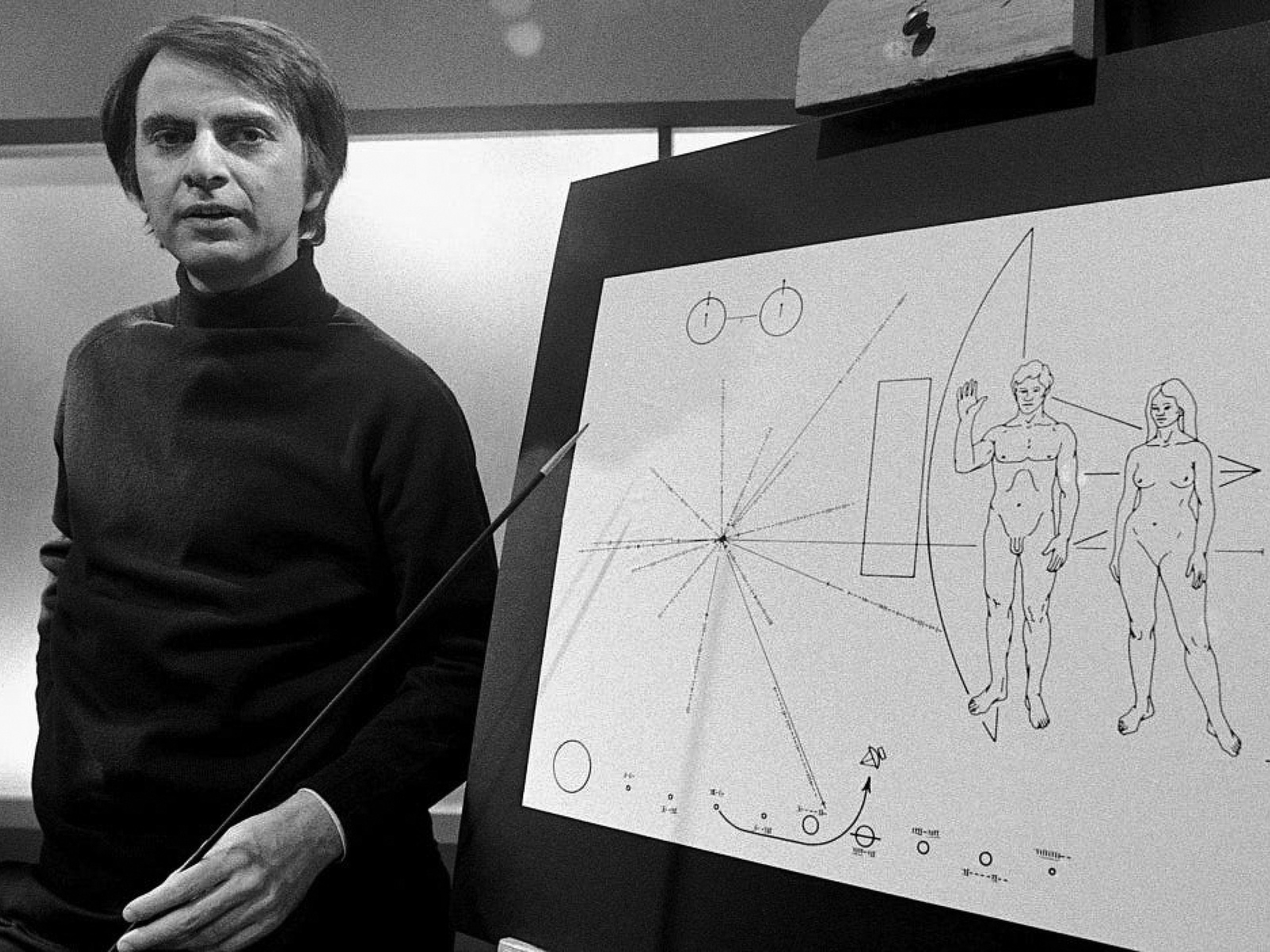
Each plaque featured intricate drawings depicting fundamental elements of humanity including representations of hydrogen, our Solar System, galactic “landmarks,” and a symbolic depiction of human figures.

If intercepted by extraterrestrial beings, these plaques were intended to convey information about Earth and its inhabitants.
The project, however, was not without its critics…
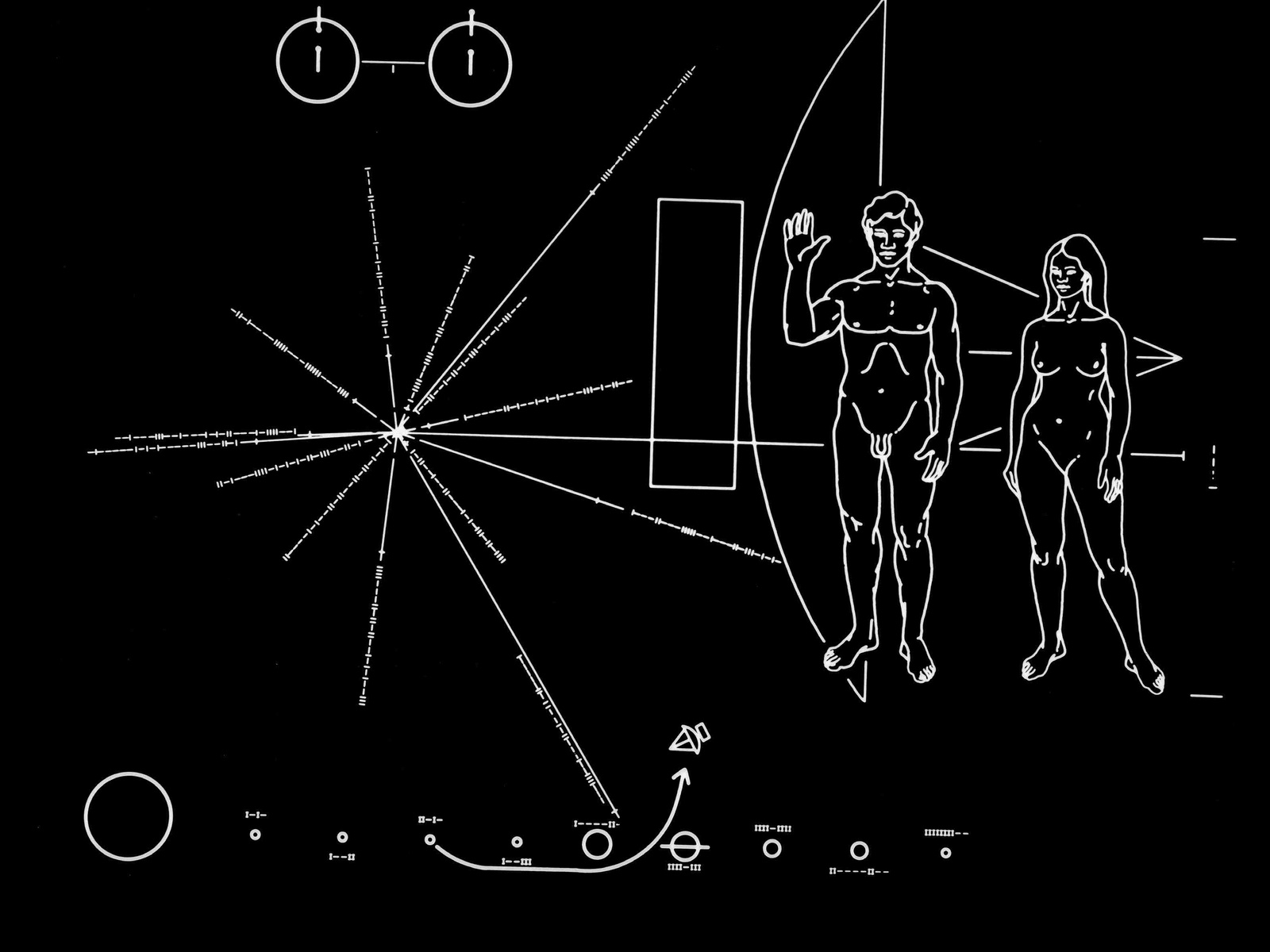
Some questioned the effectiveness of the arrow used to indicate the spacecraft’s trajectory, while others raised concerns over the human figures, particularly the depiction of gender, race, and nudity.

These criticisms sparked ongoing discussions about the implications of cultural biases in interstellar communication.
On the afternoon of November 16, 1974, the Arecibo Message was beamed from a radio telescope in Puerto Rico towards Messier 13.
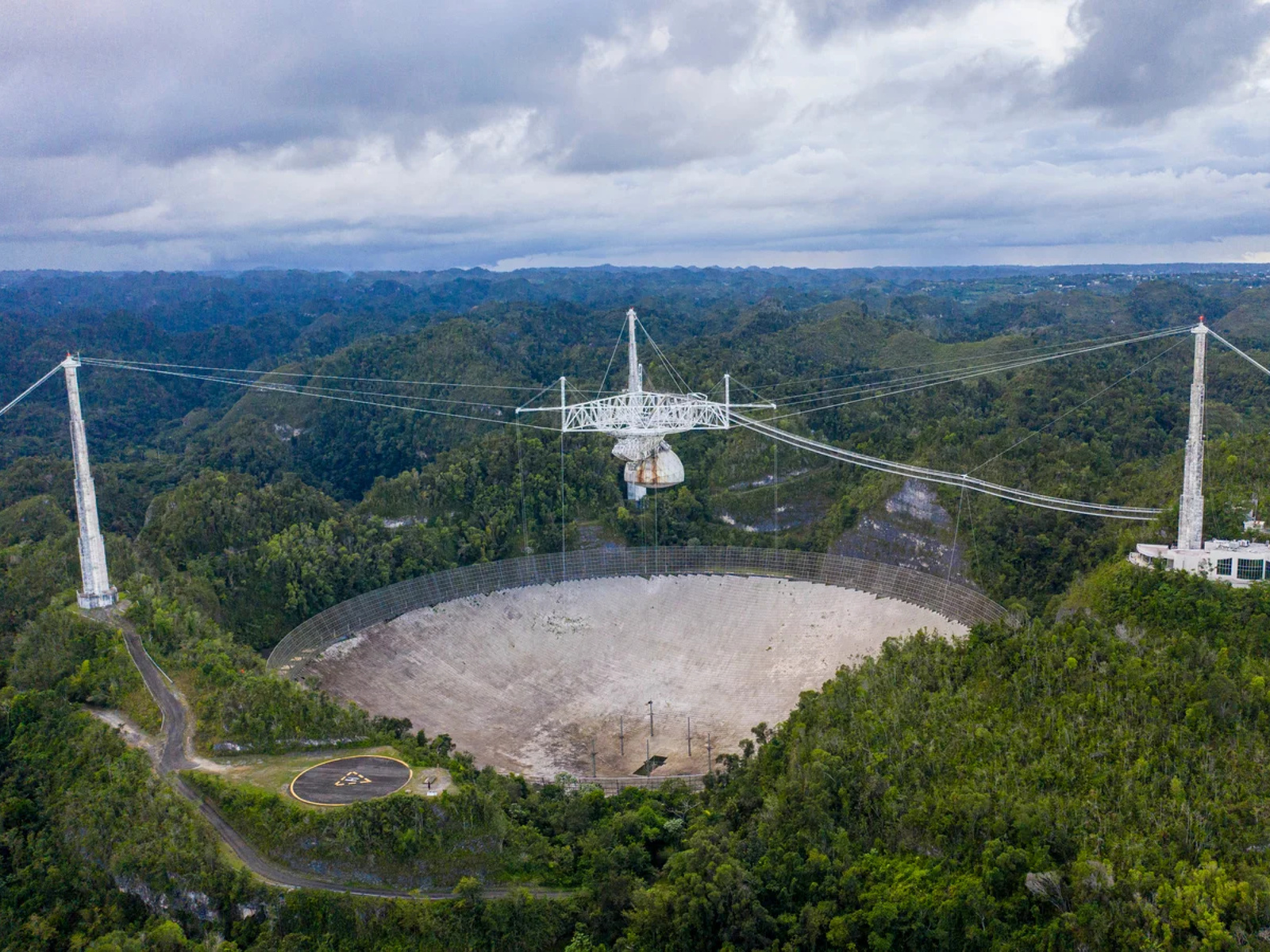
According to a research associate at the Arecibo Observatory at the time, it was a strictly a “symbolic event,” a flex showcasing the power of the newly installed transmitter and the telescope’s 1000-foot diameter dish antenna.
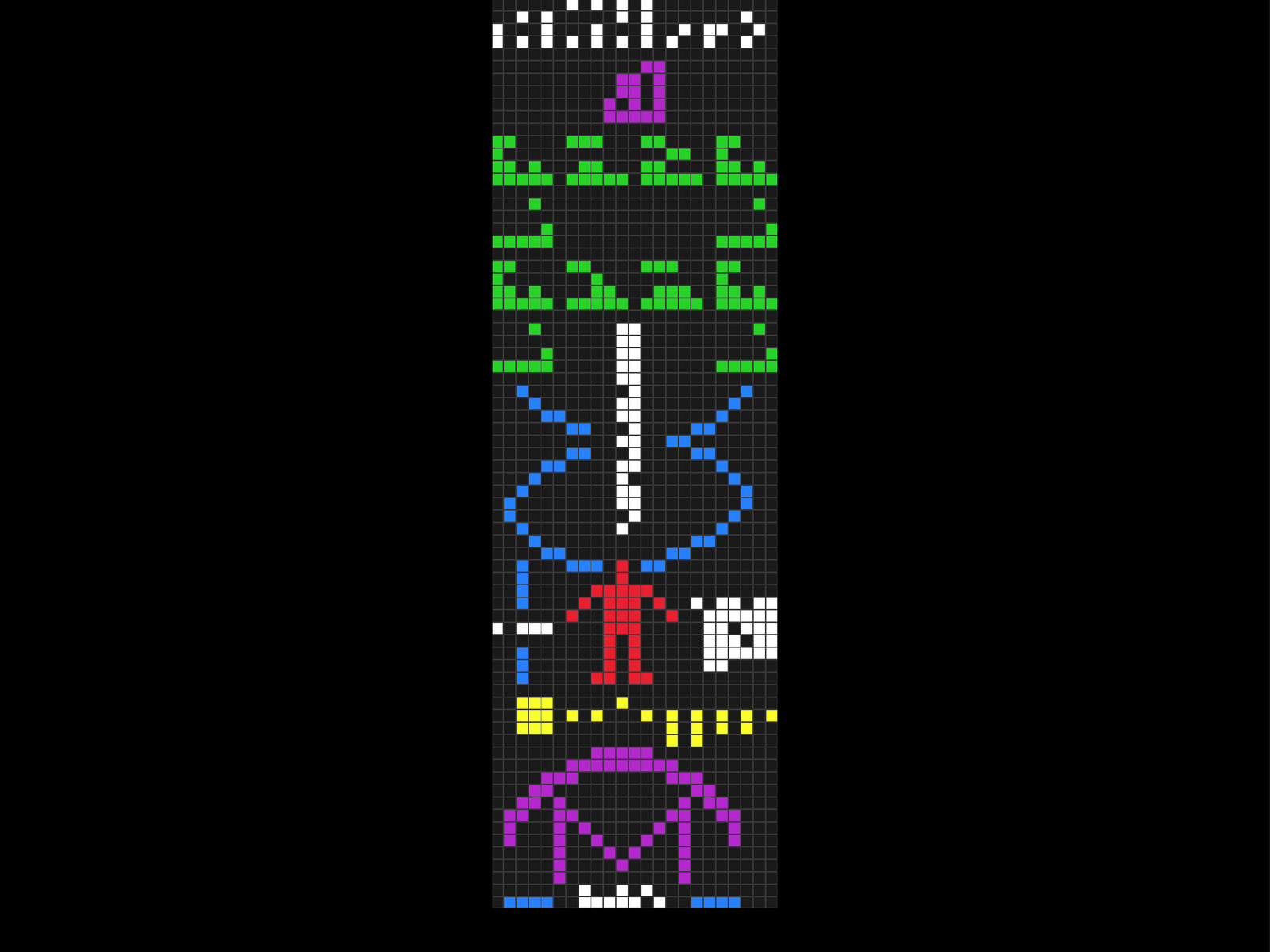

The message was the most powerful broadcast to ever be put into space. Comprising 1679 bits arranged into 73 lines of 23 characters per line (both prime numbers), and included…

…representations of chemicals…

…the DNA formula…
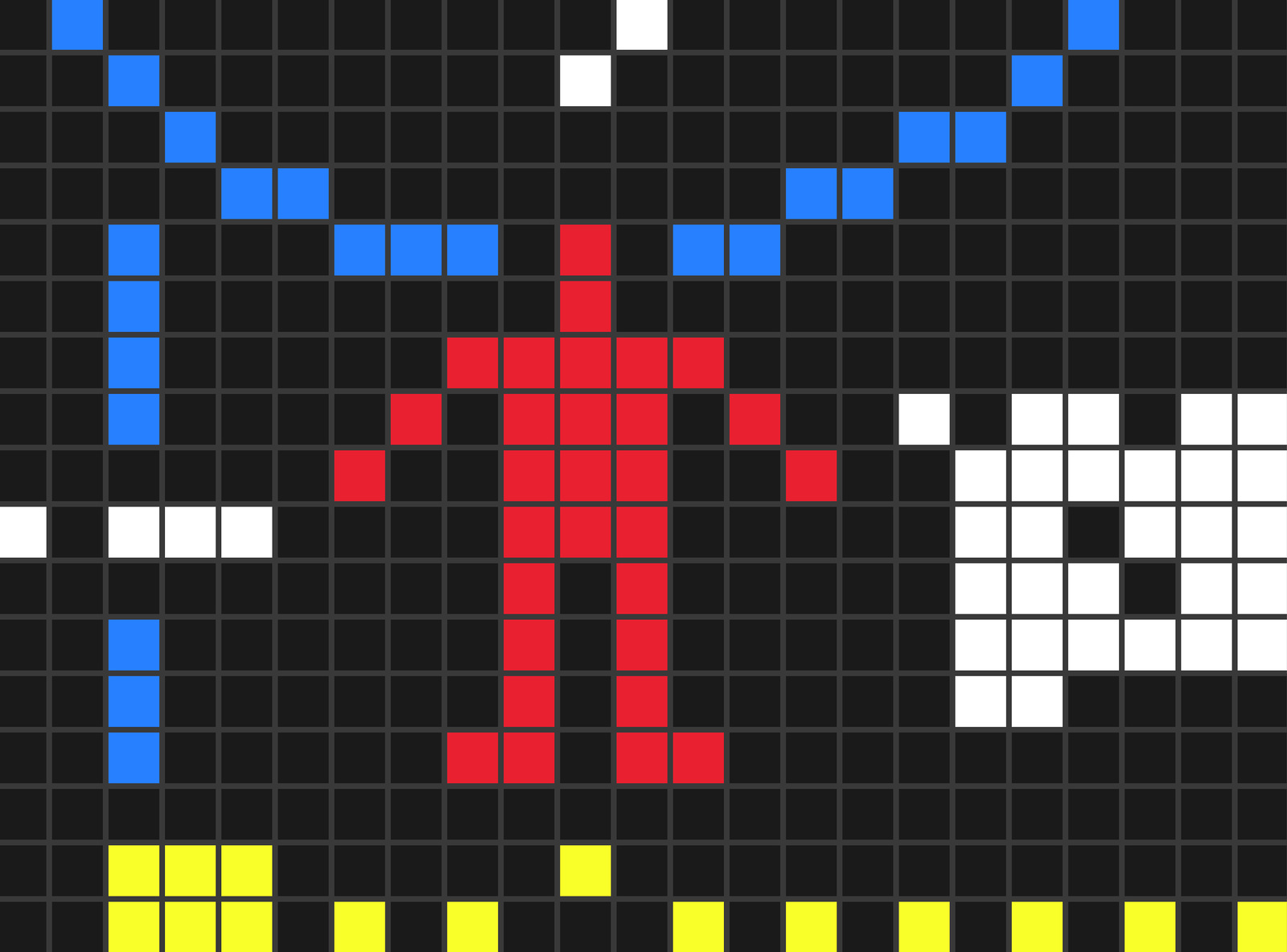
…depictions of humanity…
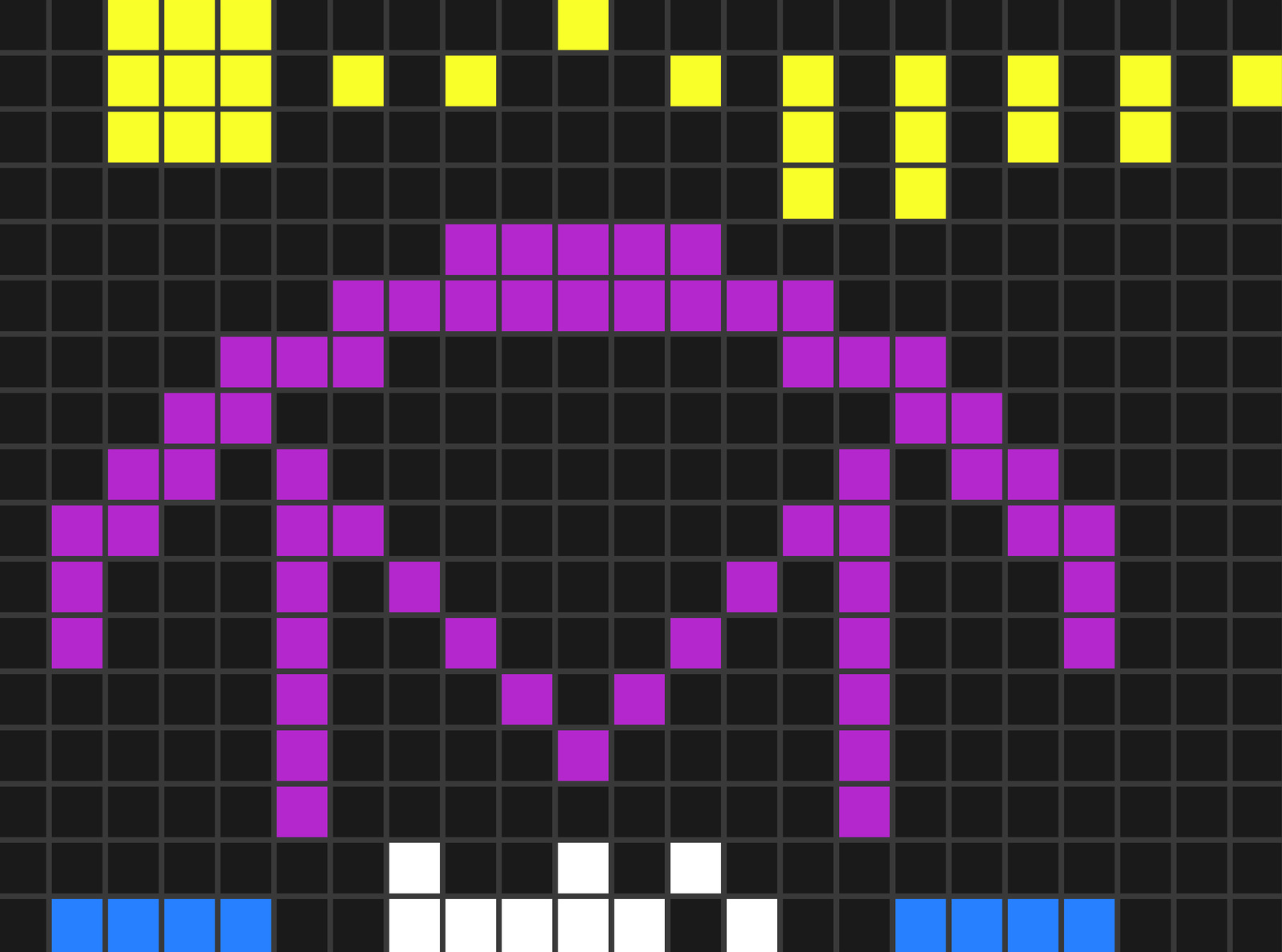
…and the Arecibo telescope.

Despite its intended target, the message’s destination, the globular cluster Messier 13, will have moved out of the signal’s path by the time it arrives in 25,000 years, due to the galaxy’s rotation.
Frank Drake, the individual responsible for the message, was given just one month to create Earth’s first ever radio greeting to the stars. Unintentionally, he encoded another message, as the transmission’s initial tones concealed the simplest greeting of all: “Hi.”
“This is a present from a small, distant world, a token of our sounds, our science, our images, our music, our thoughts and our feelings. We are attempting to survive our time so we may live into yours.“
— President Jimmy Carter
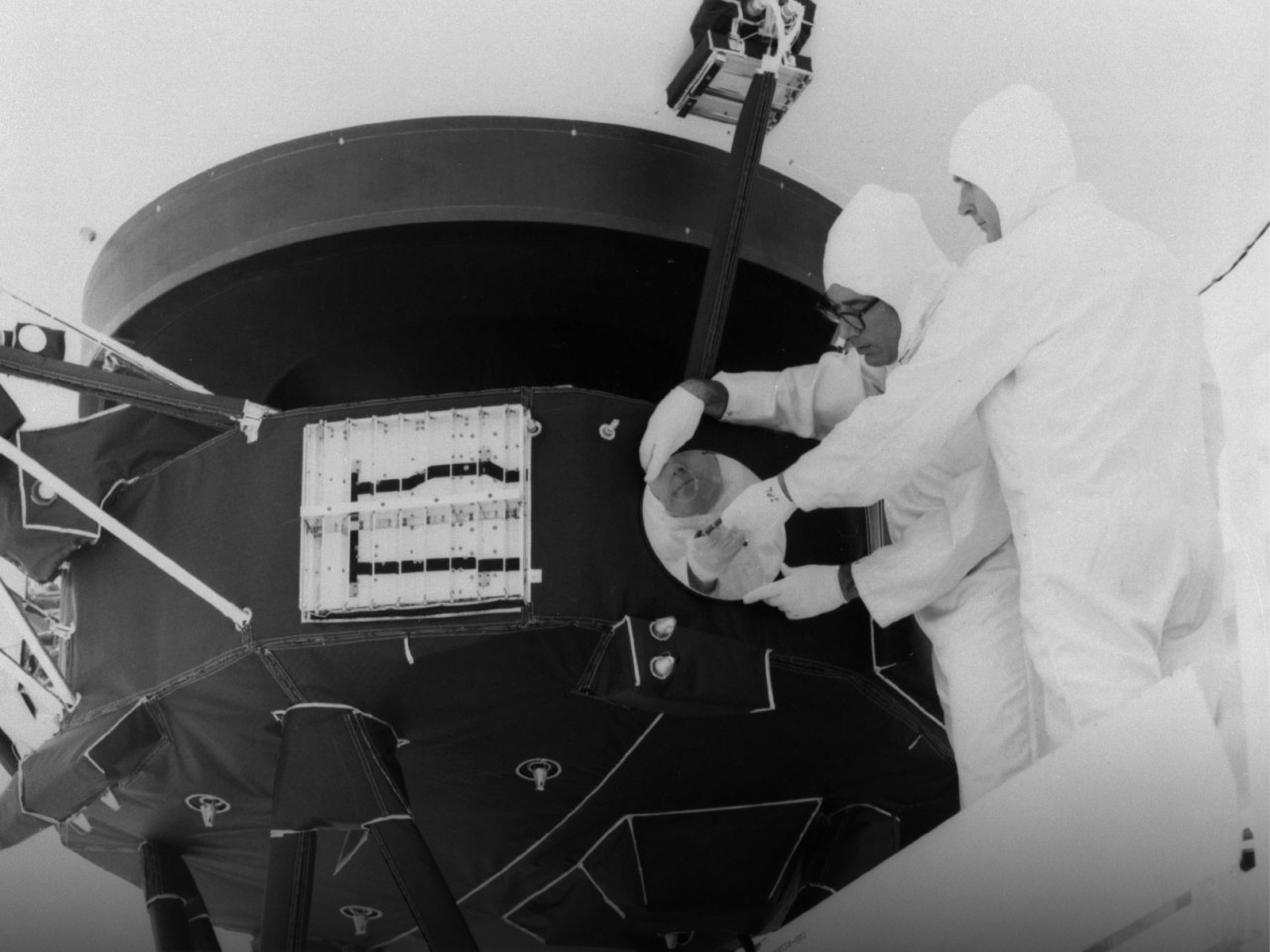
Launched aboard the Voyager spacecraft in 1977, the Voyager Golden Record serves as humanity’s message to potential extraterrestrial civilizations.
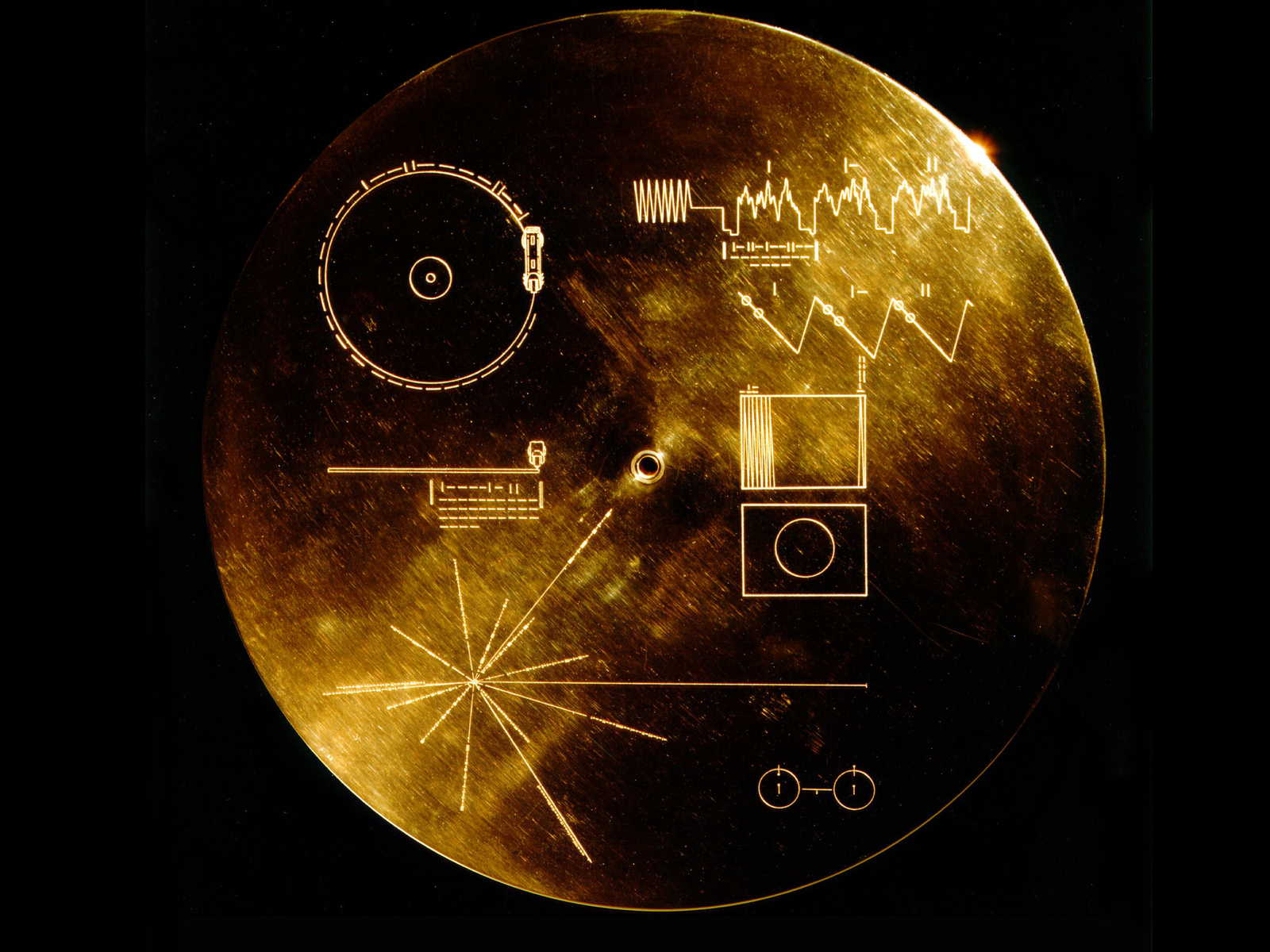
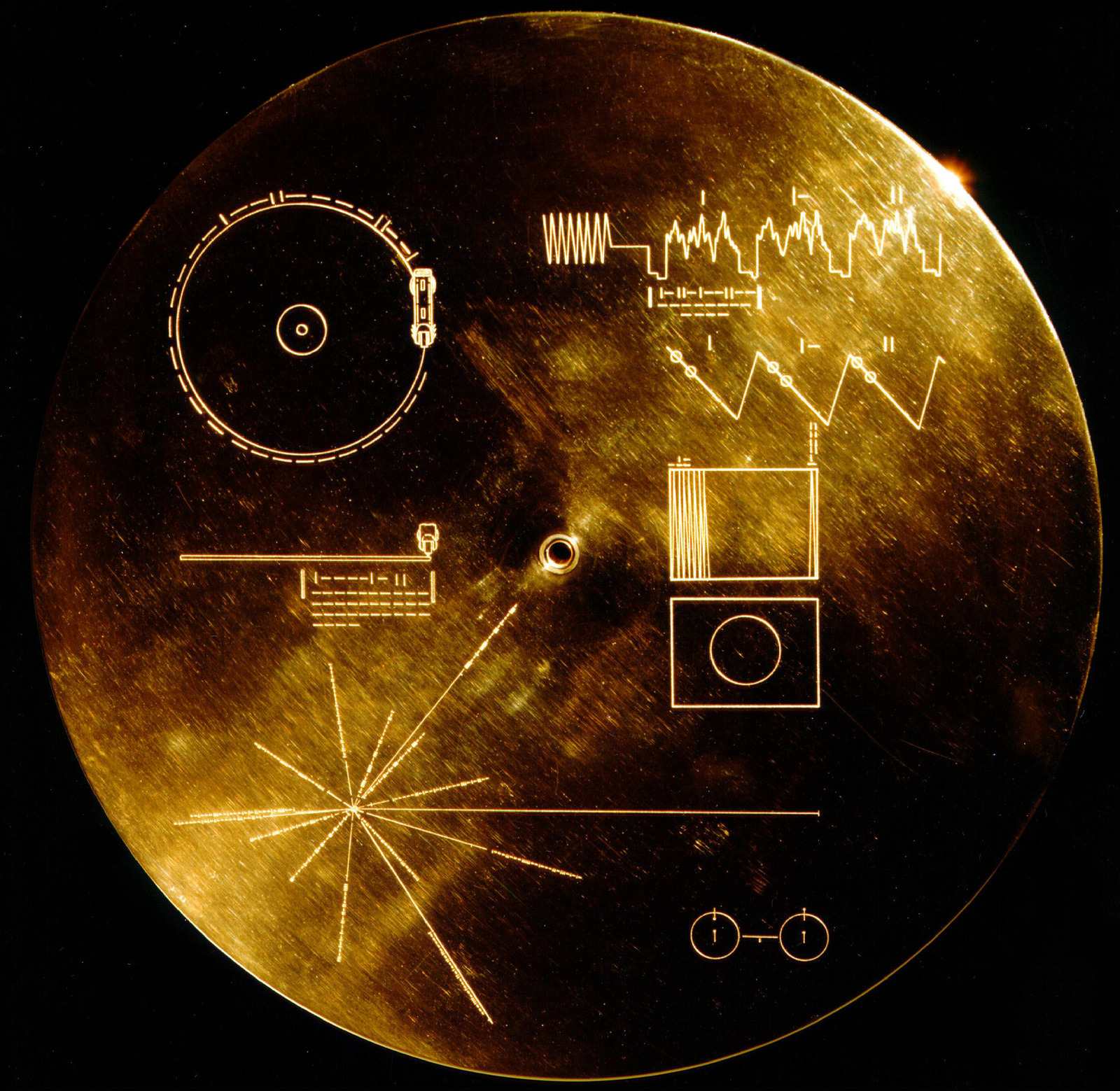
Designed to communicate with aliens, the record contains a curated selection of sounds and was etched with images representing life on Earth.
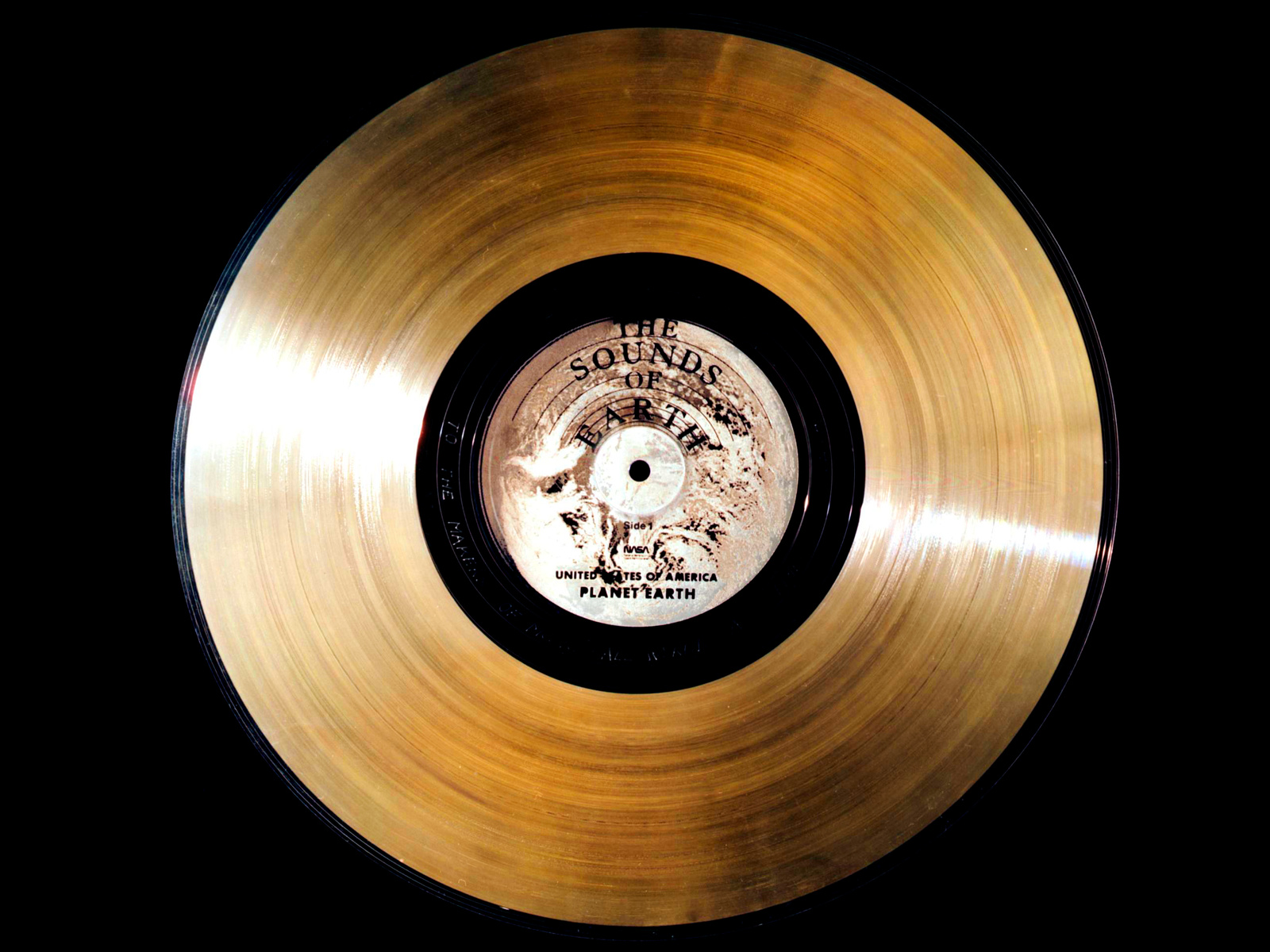
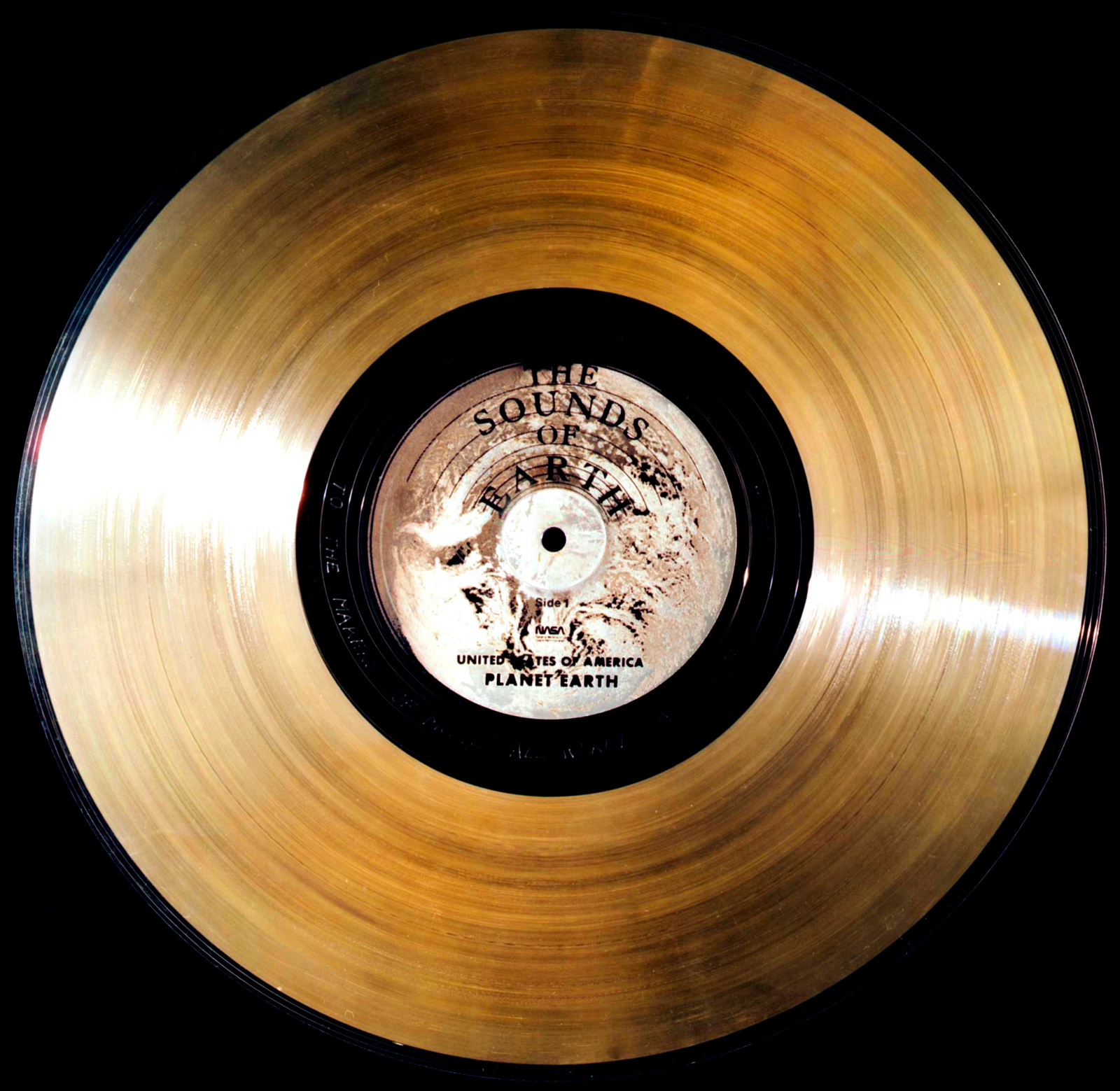
When played, the Golden Record includes greetings in 55 languages, music from various cultures, and natural sounds like wind and thunder.
Notably, it also carried an hour-long recording of the brainwaves of Ann Druyan, capturing her thoughts on Earth’s history, civilizations, and falling in love.
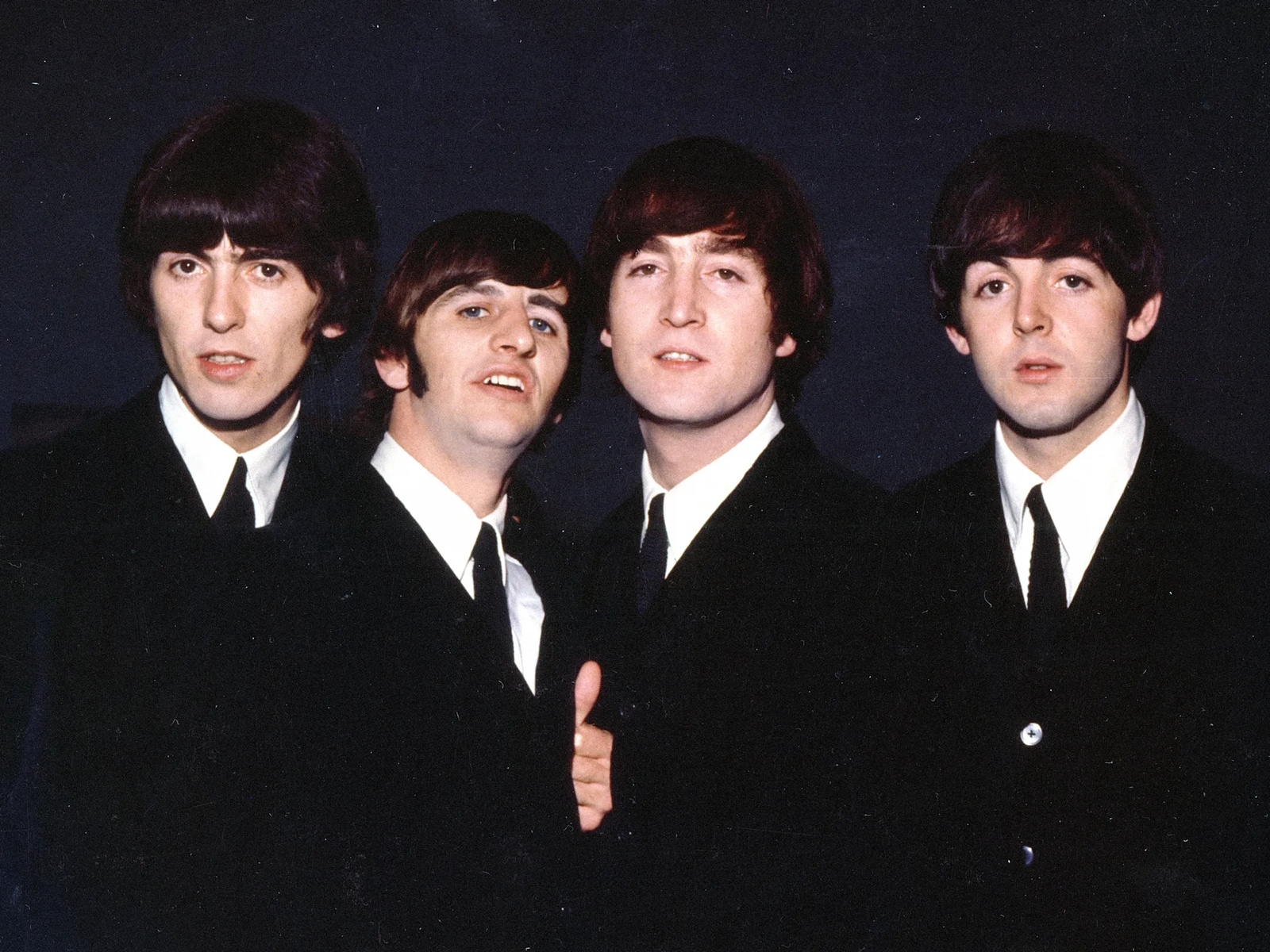
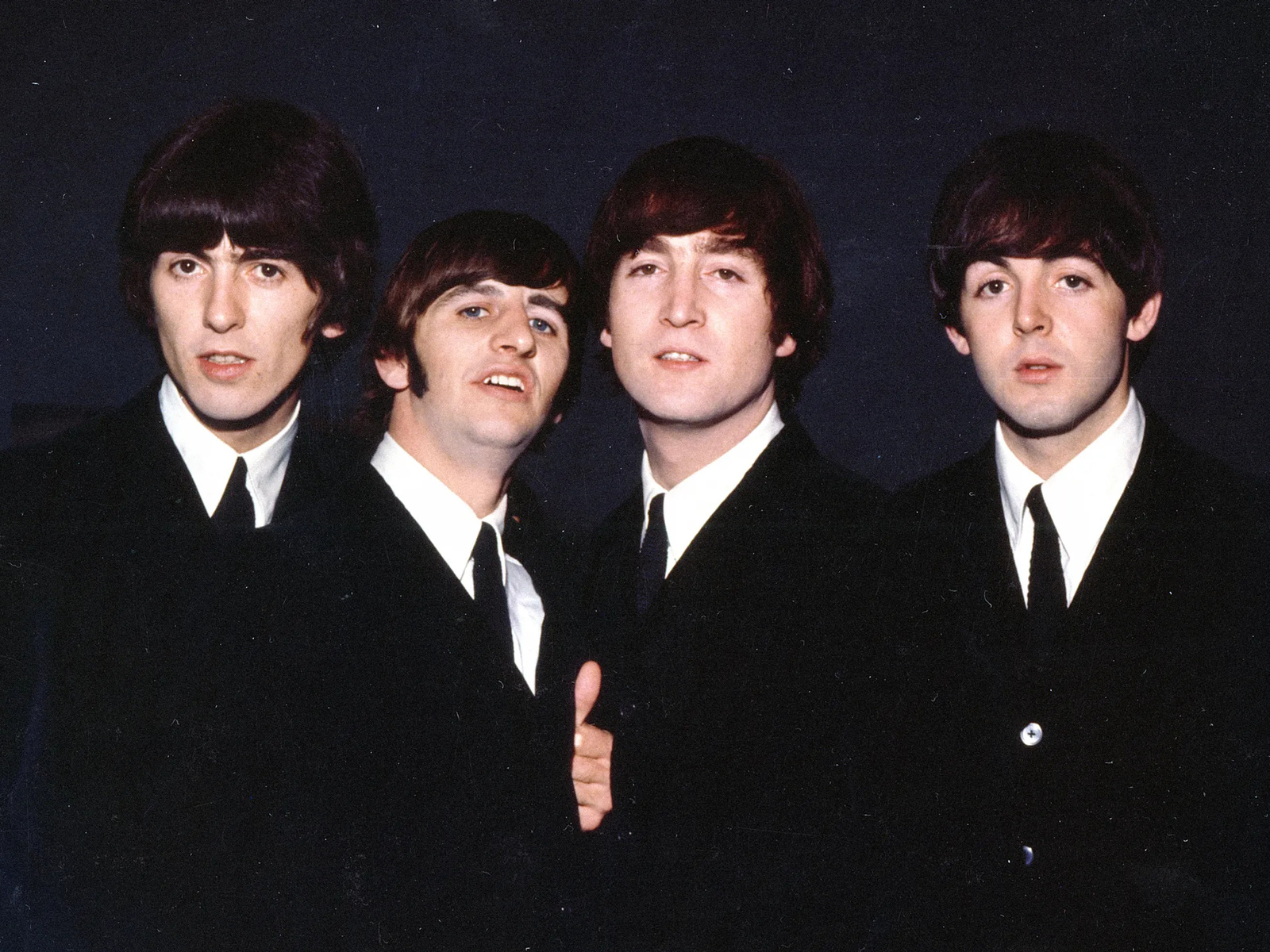
Sagan’s team hoped that the record would also feature the Beatles’ song “Here Comes the Sun,” but the record company declined.
Druyan in a 2015 interview noted, “that was one of those cases of having to see the tragedy of our planet. Here’s a chance to send a piece of music into the distant future and distant time, and to give it this kind of immortality, and they’re worried about money”.
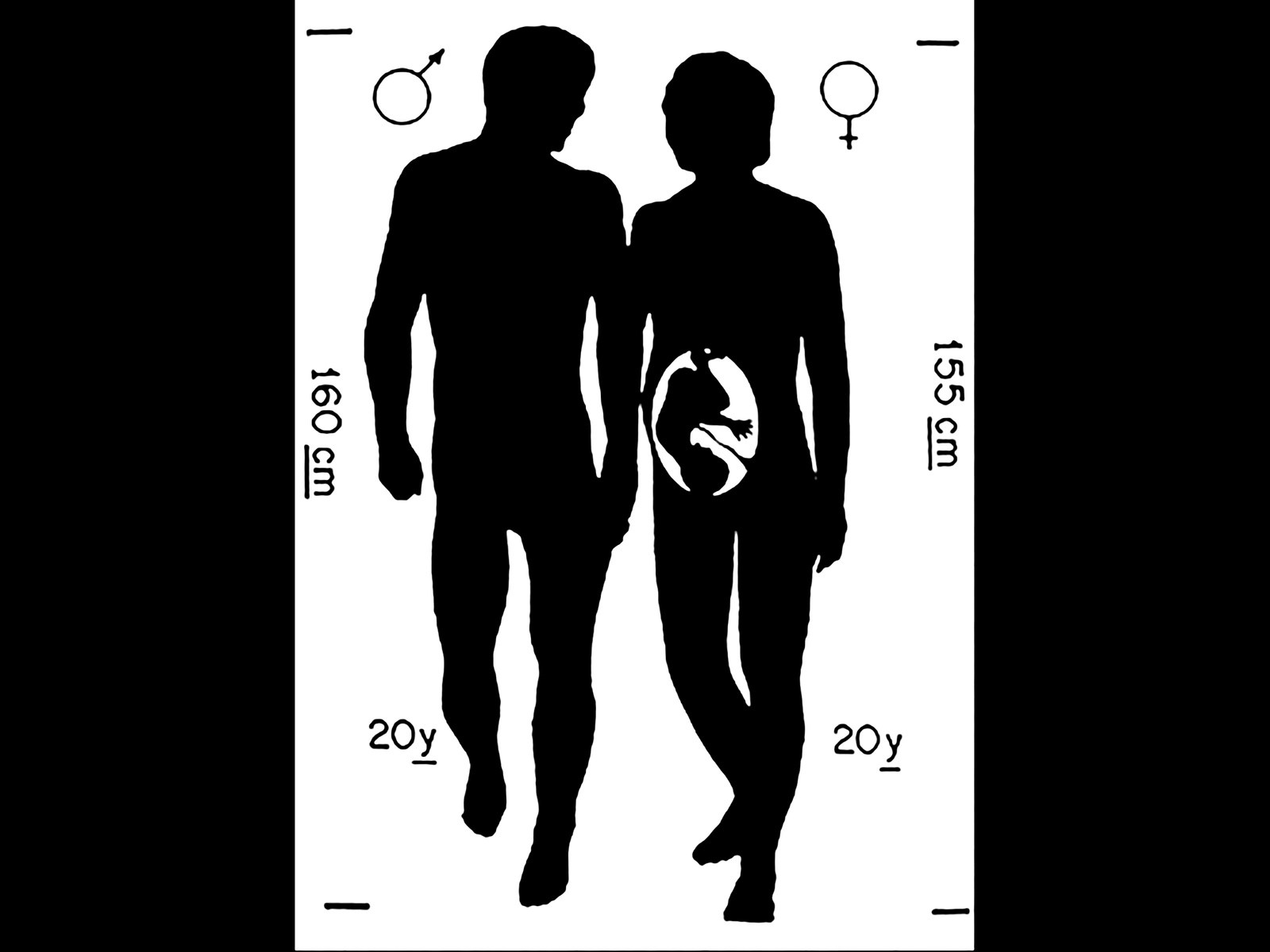

Wary of the criticism received by the Pioneer Plaque, NASA opted for a more discreet approach. While a photograph of a nude man and woman was excluded, a silhouette of the same couple was included.


The record does however feature Jon Lomberg’s “Diagram of vertebrate evolution,” depicting anatomically correct naked figures, with the woman depicted waving—offering a corrective to the previous Pioneer Plaques gendered representations.
In 1983, “Greetings to Altair” was transmitted from the Stanford radio telescope to the Altair star system (16.7 light years), due to the possibility of life nearby.
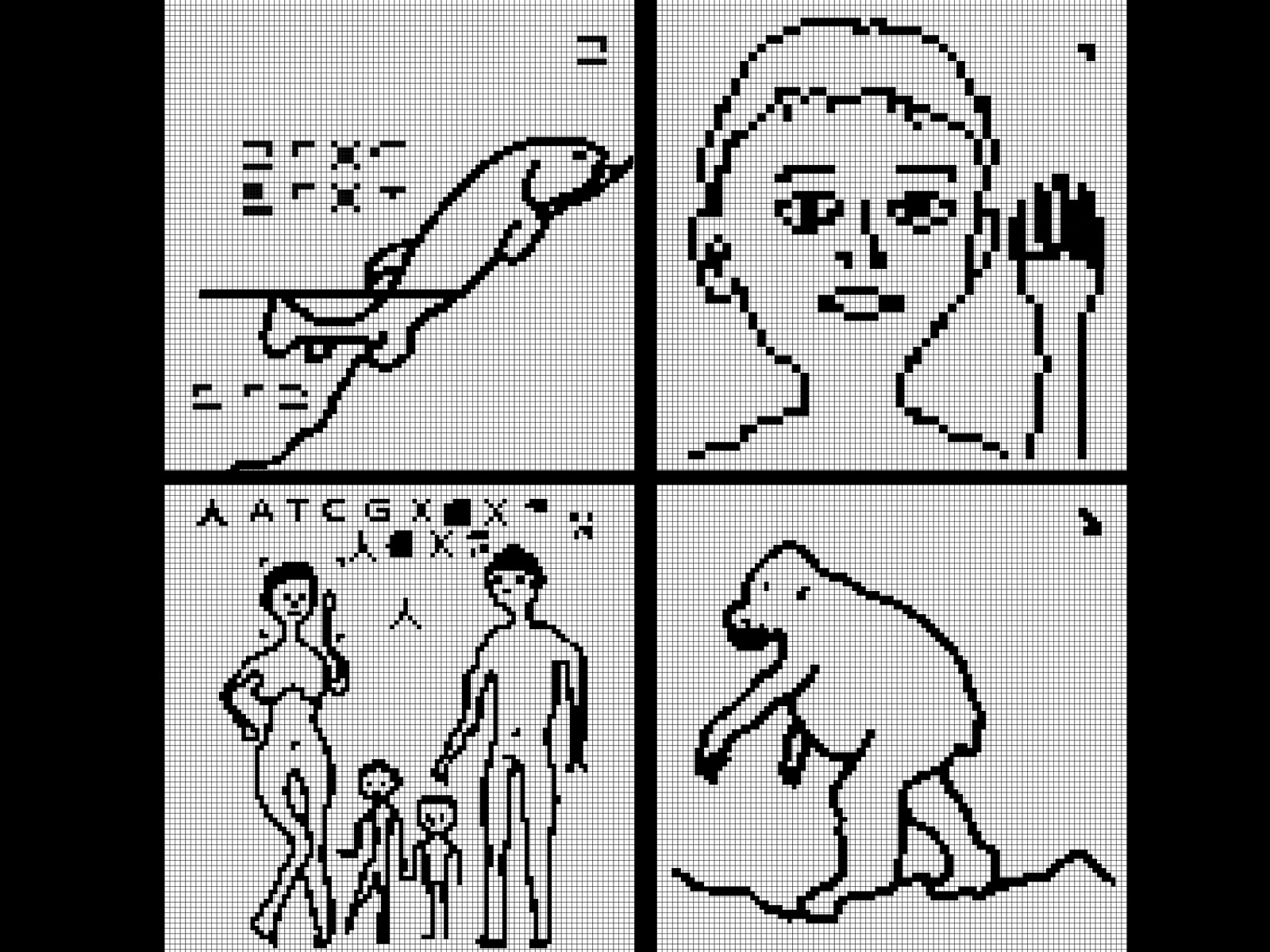

The message, created by astronomers Masaki Morimoto and Hisashi Hirabayashi, consisted of 13 drawings illustrating the history of life on Earth.
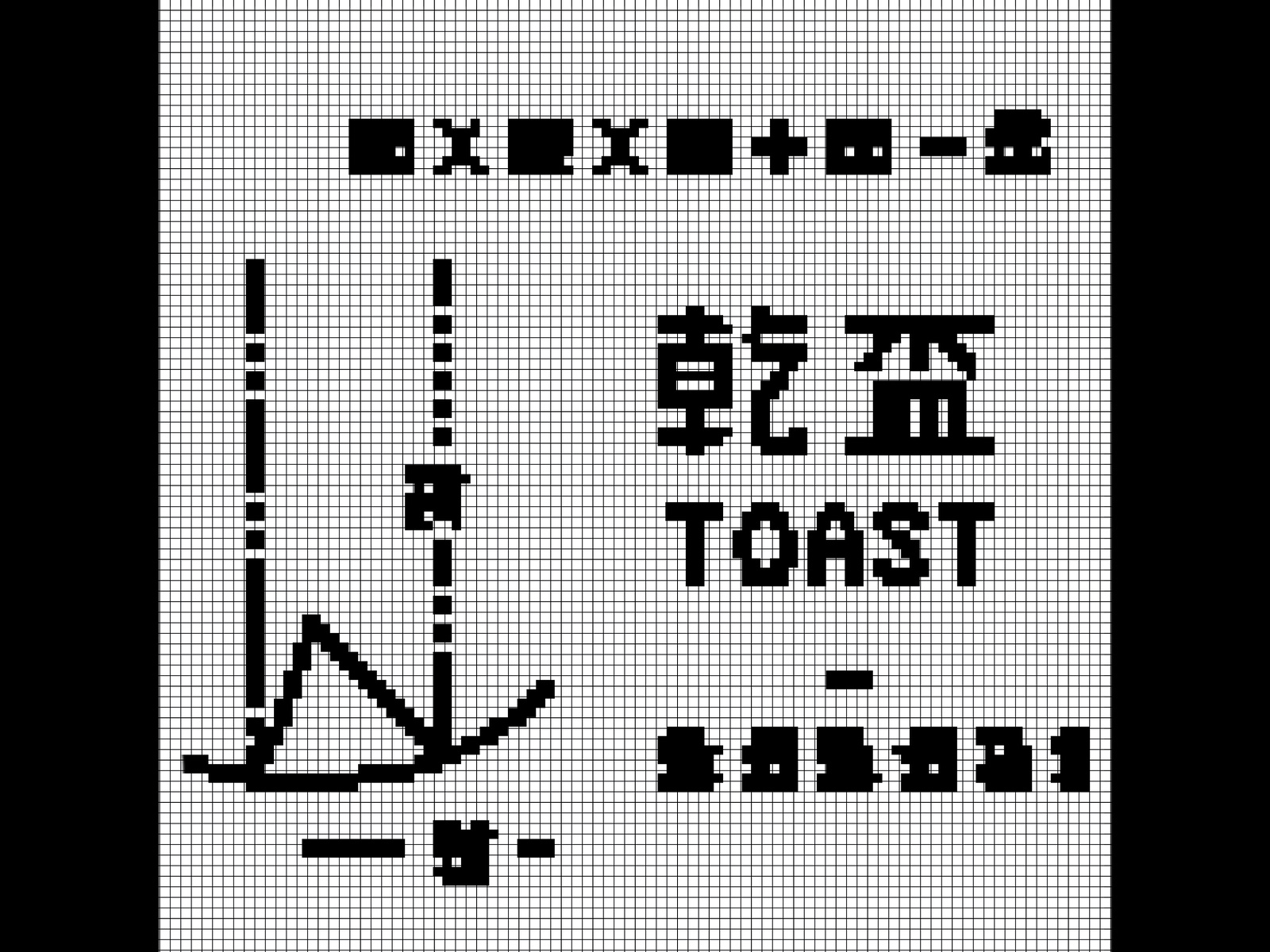
In one drawing, the team also decided to feature the word “toast” written in English, though Hirabayashi confessed that they had been drunk when they conceived the idea.
2023 was the first year that Earth might have received a reply. So far, no toast.
In 1999 and 2003, messages known as the “Cosmic Calls” were sent from a radio telescope in Crimea, Ukraine towards various nearby star systems.
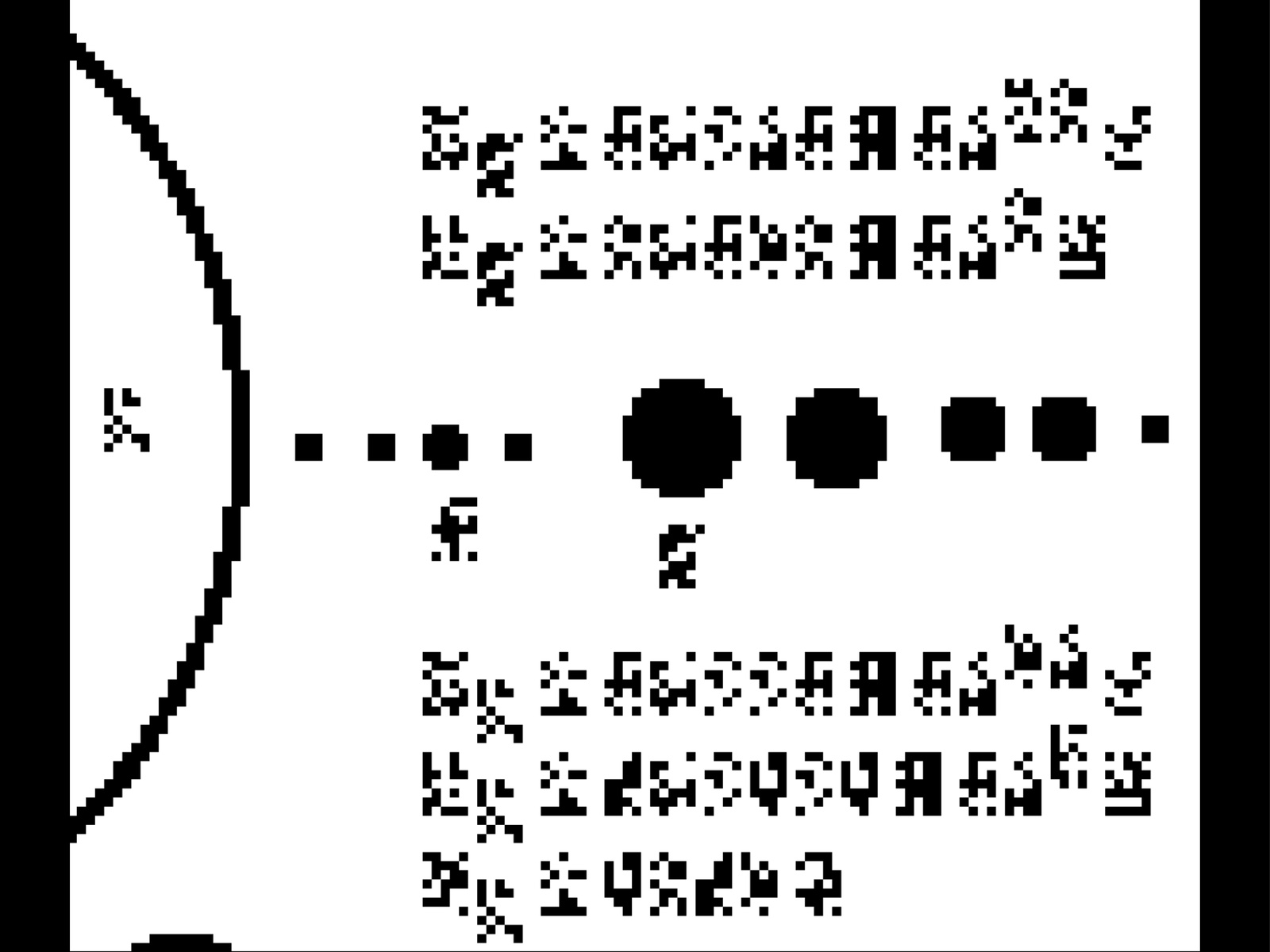
A 23-page primer explaining basic aspects of human math, science, and biology was sent, with each page consisting of a 127 pixel image.
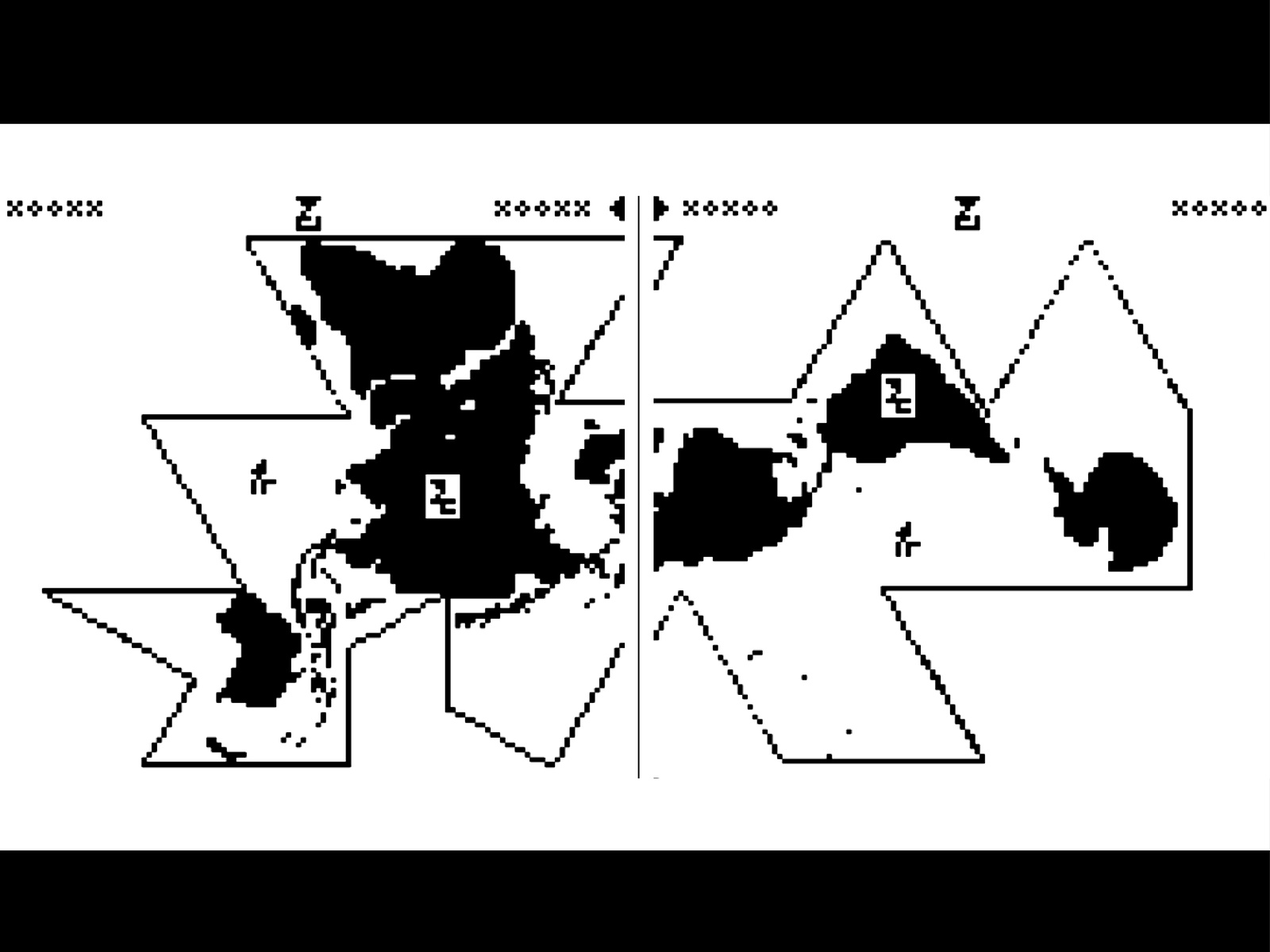
The pages contained a key to reading the images, and explanations of numerals, arithmetic, algebra, geometry, chemistry, time and space, temperature, solar system, a map of the Earth…
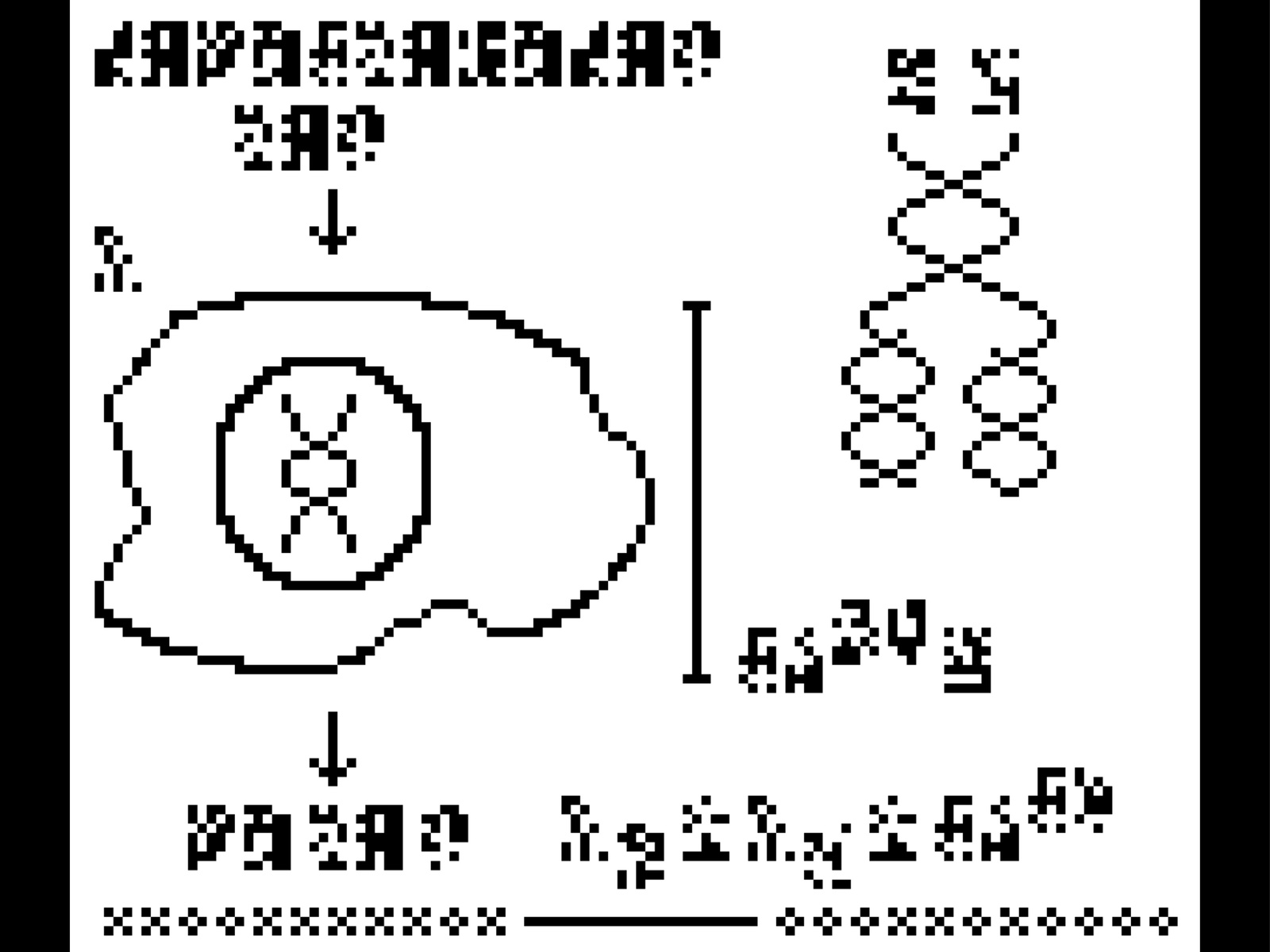
…a calendar system, human anatomy, vital statistics, DNA chemistry, cell respiration and division, cosmology, and a set of questions.
Originally proposed by Alexander Zaitsev of Russia’s Institute of Radio-engineering and Electronics, the Teen-Age Message (TAM) included a musical message dubbed the “First Theremin Concert for Extraterrestrials.” The proposal was declined in 2000 due to fears of endangering humanity by broadcasting our existence to alien civilizations.
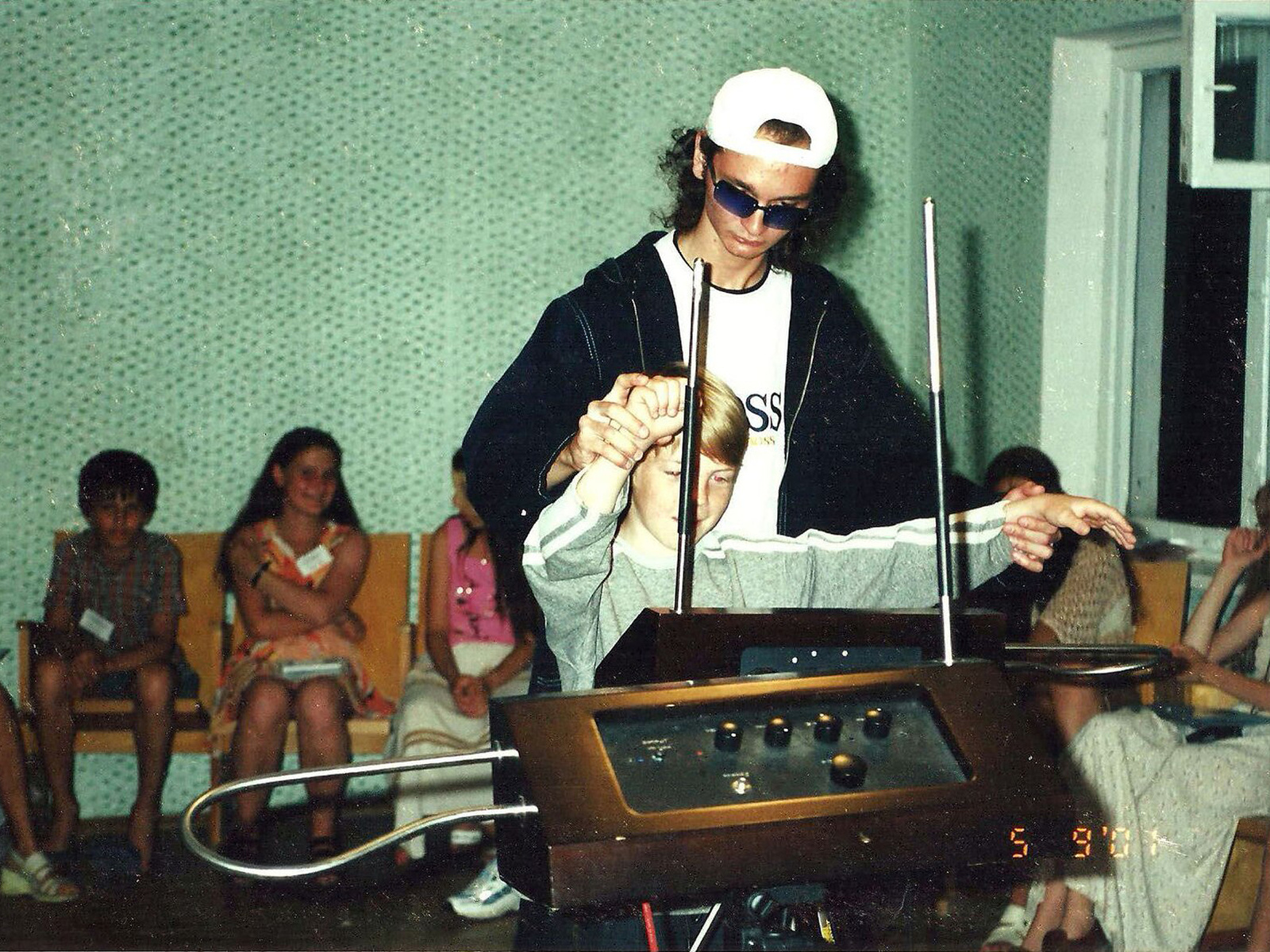
In 2001, after receiving funding from the Education Department of Moscow, Russian teenagers transmitted their message from the Evpatoria Deep Space Center.

Compositions in the The First Theremin Concert included (from left to right) The 9th Symphony by Beethoven, The Swan by Saint-Saens, and Summertime by Gershwin.
In contrast to previous attempts, Zaitsev wanted the message to focus on art “which is more universally comprehensible than language.”
In February 2008, NASA commemorated the 40th anniversary of the Beatles’ song “Across the Universe” by beaming it 431 light years away from Earth towards the North Star.
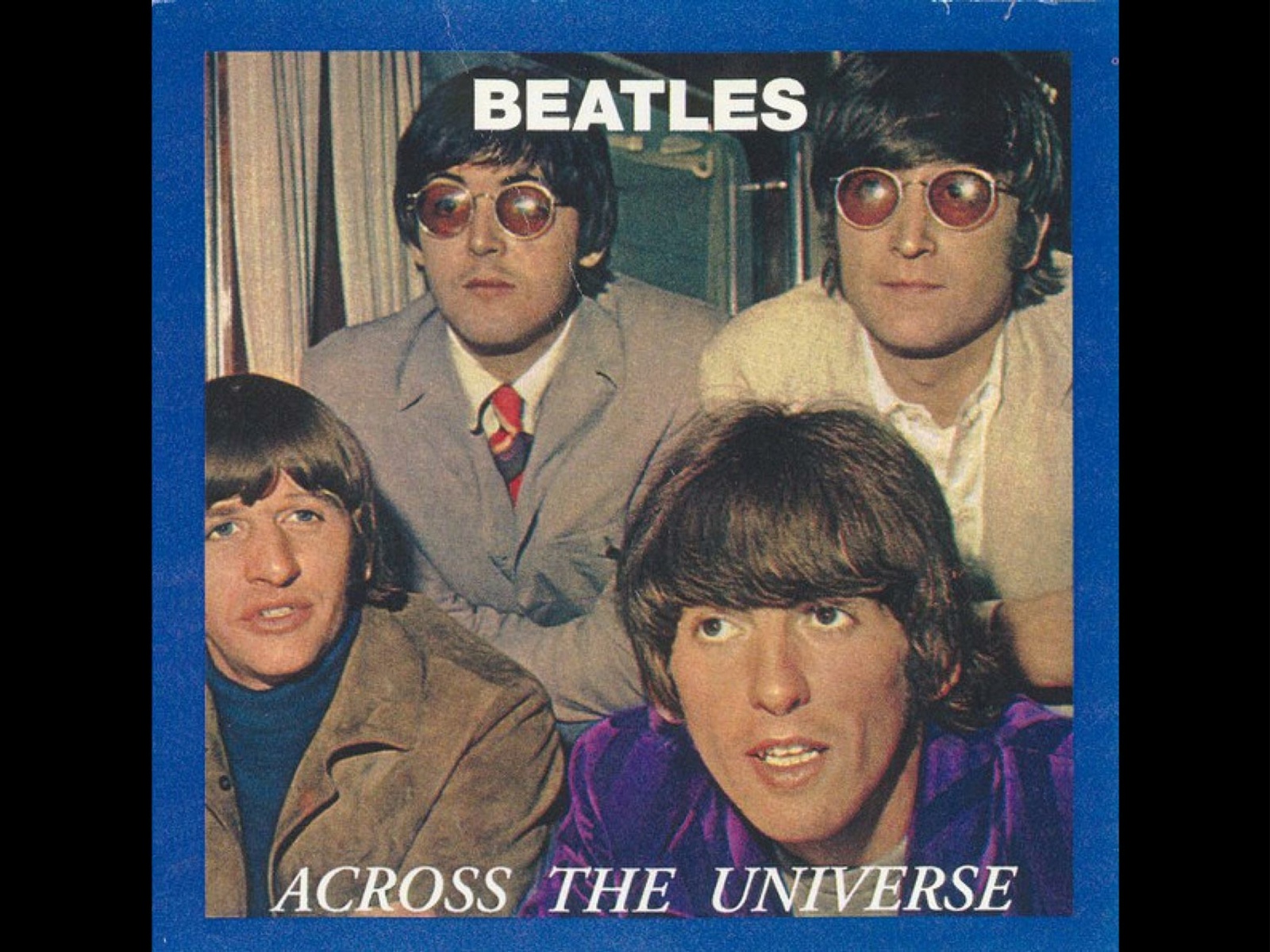
The initiative, known eponymously as “Across the Universe,” was part of NASA’s efforts to engage the public in space exploration, as well as to convey a message of goodwill to potential extraterrestrial civilizations.
Interestingly, this event echoes the earlier attempt by Carl Sagan’s team to include the Beatles’ music on the Golden Record. Sir Paul McCartney, enthusiastically welcomed transmission of the song, saying “Send my love to the aliens. All the best, Paul.”
The “Hello from Earth” project, launched during Australia’s National Science Week, sought to ignite public enthusiasm for science through a captivating social media initiative.
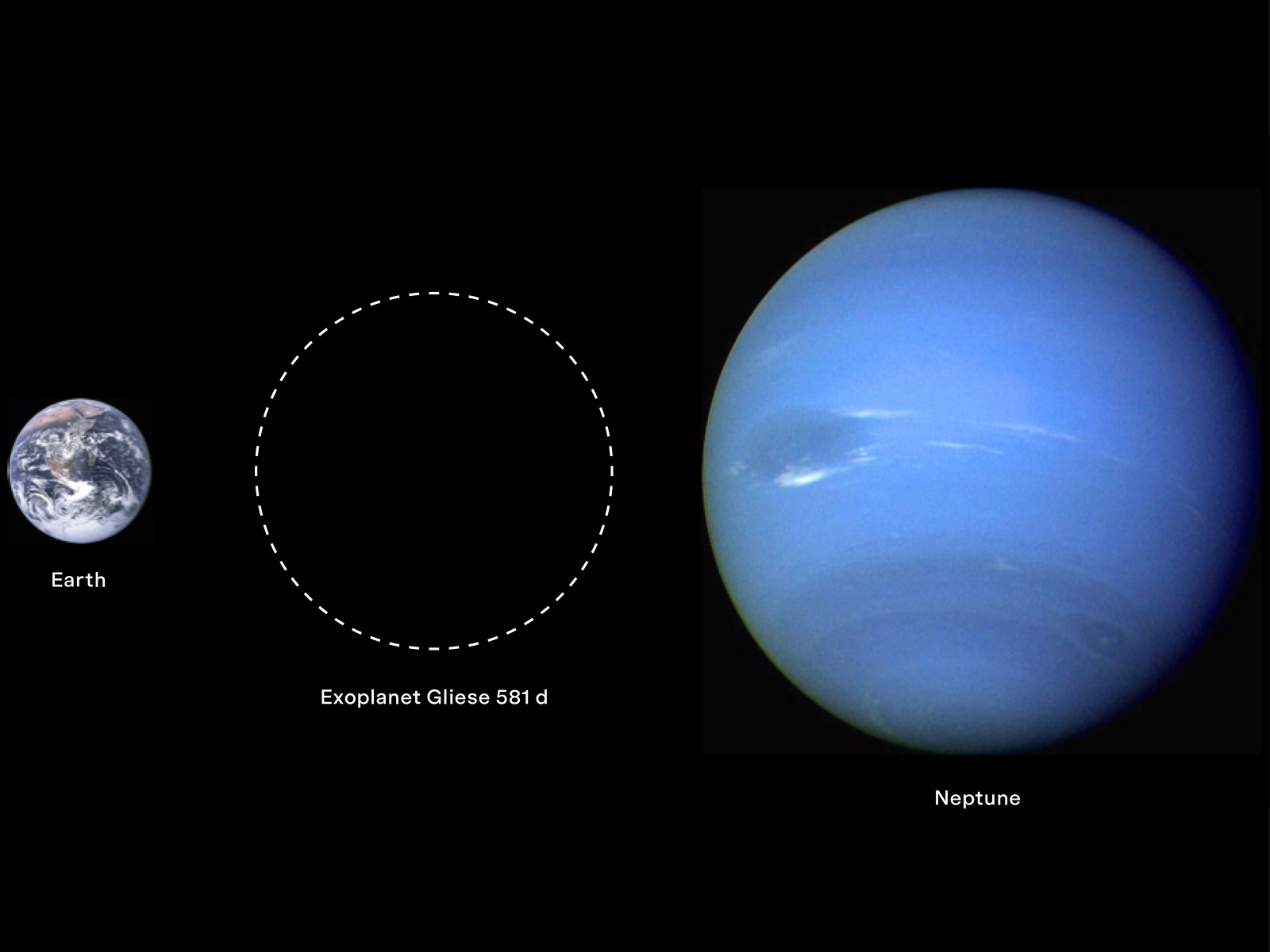
By gathering short messages from the public, organizers aimed to transmit them to Super-Earth Gliese 581d, an exoplanet with potential habitability.
Sample messages:
“We come in peace. If you are out there, please respond. We want to be friends. We are all different and we can’t wait to meet you! From the children of Earth.” —Class4M, Castle Cove Public School, Australia
“Luke, I am your father.” —Ricardo, DF, Mexico
A Simple Response to an Elemental Message (ASREM) was an Interstellar Radio Message (IRM) that included responses from people worldwide to the question: “How will our present environmental interactions shape the future?”
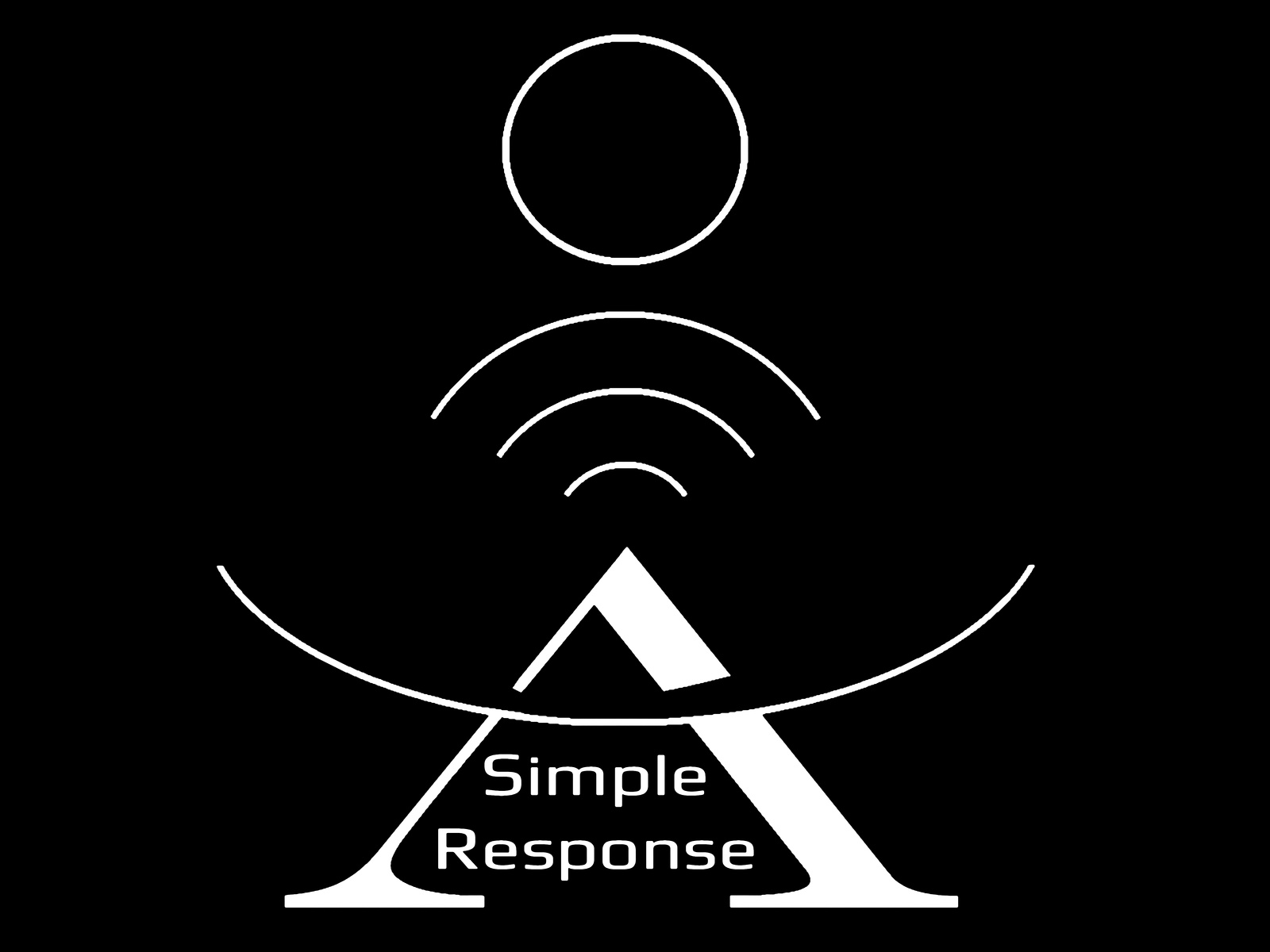
This initiative aimed to explore and communicate humanity’s perspectives on environmental issues to potential extraterrestrial civilizations.
Almost 4,000 messages were transmitted, including quotes from Carl Sagan, Mahatma Gandhi, and Koko the gorilla, who wrote:
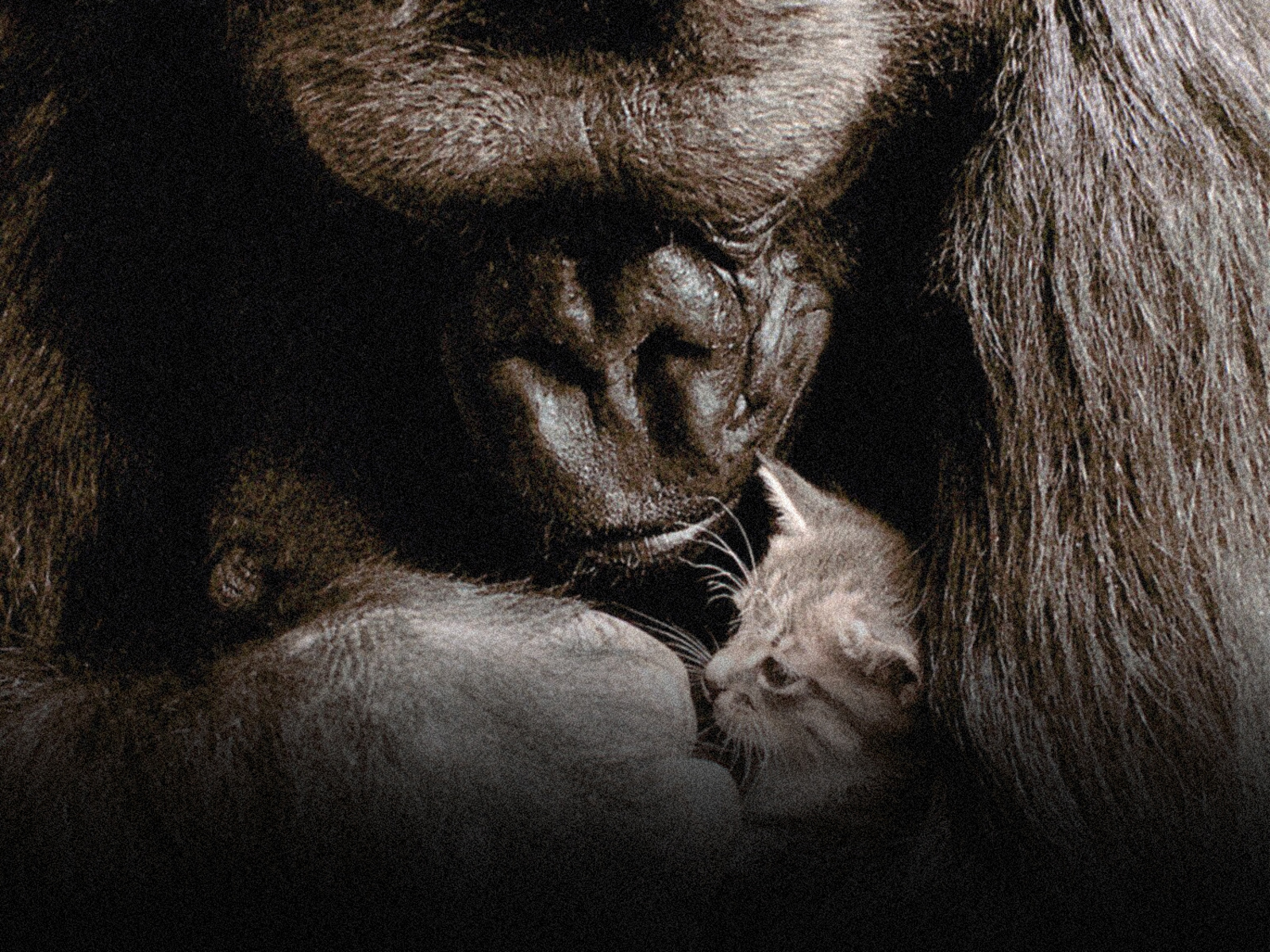
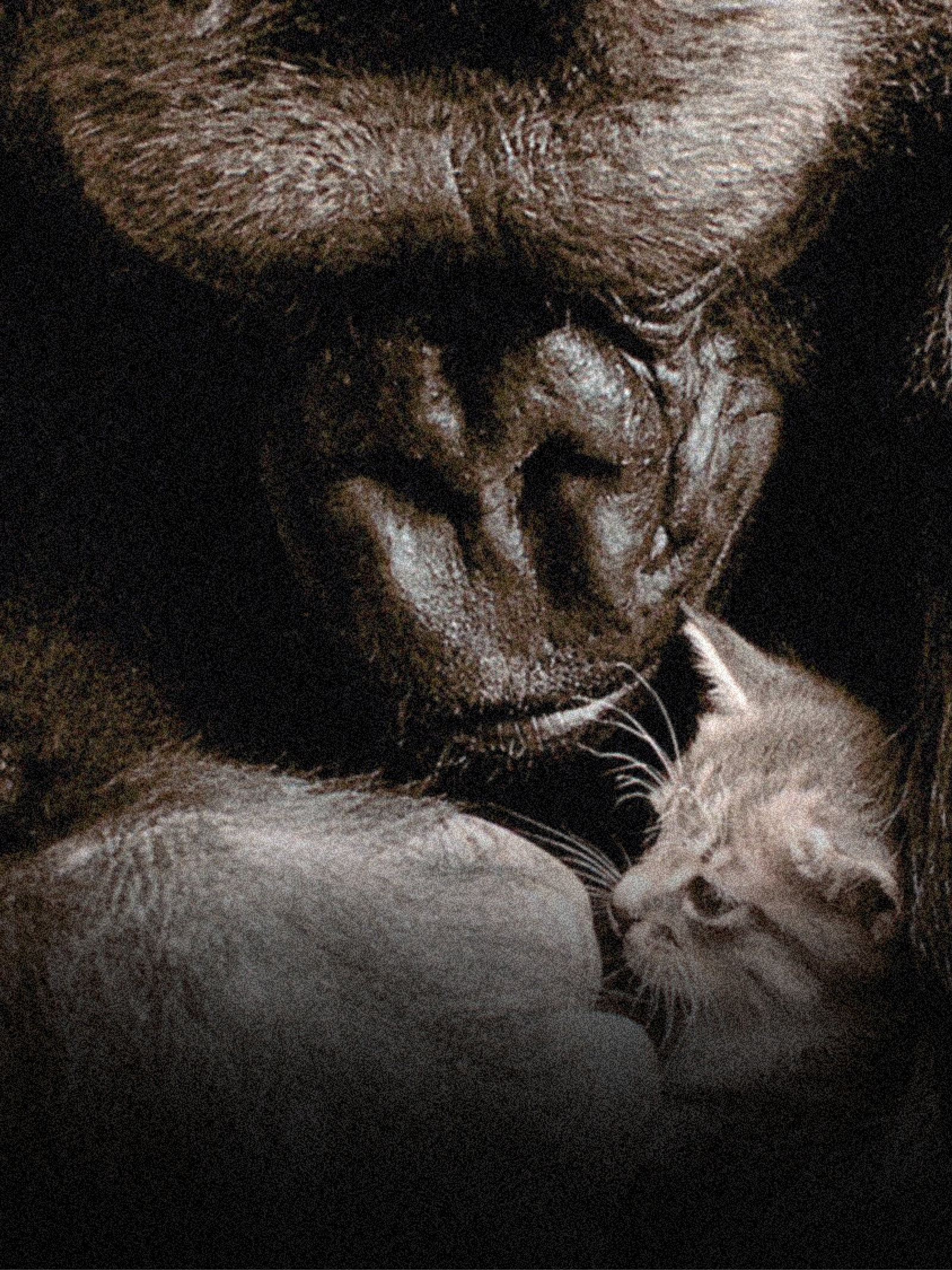
I am gorilla… …I am flowers, animals …I am nature. Man Koko love. Earth Koko love. But Man stupid… …Stupid! Koko sorry… … Koko cry. Time hurry! Fix Earth! Help Earth! Hurry! Protect Earth…
